

Education , Pond5 Playlist
From bristol to your earbuds: exploring the world of trip-hop.
In the early 1990s, in Bristol, UK, an enigmatic genre emerged called Trip-Hop. Though its leading artists, including Massive Attack, Tricky, and Portishead, have openly rejected the label, the word “trip-hop” has become synonymous with the style created by Bristol bands. Here, we will discover what Trip-Hop is, why its most prominent artists oppose the term, and how you can use it in your creative projects.
WHAT IS TRIP-HOP?
Trip-Hop fuses elements of hip-hop, electronic beats, jazz, and soul to create a sound that is as melancholy as it is intriguing. Defined by its moody atmospheres, soulful vocals, and hypnotic beats, it transcends conventional boundaries, creating a unique and immersive musical experience. Take, for example, Pond5 contributor Musinova’s song Sensual 90S Trip-Hop Lofi Hip Hop . It takes you on a romantic journey through a hip-hop beat.
HISTORY OF TRIP-HOP:
As the name suggests, the term describes a sort of psychedelic hip-hop. Trip-hop is a combination of the immersive style of music with the downbeats used in hip-hop. The term “trip-hop” was first published in the early 1990s in MixMag, a prominent British dance and club music magazine. Music journalist Andy Pemberton coined the phrase while describing the sonic journey, or “trip,” experienced through DJ Shadow’s track “ In/Flux .” Despite that being the first printed reference, fans credit the genre to earlier DJ crews from Bristol. This reference is why some use “Bristol Sound” synonymously with “trip-hop”. One of the biggest DJ crews in Bristol was the Wild Bunch, who evolved into two of trip-hop’s pioneering acts: Massive Attack and Tricky.
If you’re looking for an early Trip-Hop sound, Pond5 artist nealgardner has you covered with Until My Last Breath (In The Style Of Portishead And Massive Attack).
Massive Attack’s Blue Lines
When Massive Attack released their debut album, Blue Lines, in 1991, they unknowingly created the blueprint for future trip-hop music. The album blends soul, reggae, hip-hop, and electronic music. Tracks like “Unfinished Sympathy” and “Safe from Harm” popularized the trip-hop genre.
Becoming Mainstream
In 1993, Icelandic international artist Bjork released an album called Debut. The album, produced by Wild Bunch member Nellee Hooper, contained elements of trip-hop and is credited as one of the first albums to introduce electronic dance music into mainstream pop.
Another Bristol band, Portishead, released their debut album in 1994 entitled Dummy. The following year, Dummy won the Mercury Music Prize as the best British album of the year. This accolade resulted in the most significant exposure for the Trip-Hop genre since its inception. With an influx of imitators, Portishead began to distance themselves from the trip-hop label they had inadvertently helped popularize.
Rejecting the Trip-Hop Classification
Many of the pioneering Trip-Hop artists have openly rejected the genre label. Some feel it was a term invented by record companies to create a market rather than an actual music genre. Others think the phrase is limiting and doesn’t reflect their music. And some believe it to be a cultural appropriation of hip-hop.
Contemporary Trip-Hop
Trip-Hop has continued to evolve and appears in the music of many mainstream artists like Adele, Lana Del Ray, and Billie Eilish. The further we get from the genre’s origins, the less off-putting the term has become. It is becoming a helpful classification rather than a label from which to rebel.
GENRE CHARACTERISTICS:
These characteristics can help classify a Trip-Hop song:
- Downtempo Beats: Trip-Hop often features slow to mid-tempo drum beats, creating a relaxed, dreamy groove.
- Sampling: Producers use fragments of existing music or sounds, tweaking them to craft new compositions employing a typical trip-hop method.
- Electronic Production Technologies: The genre prominently relies on synthesizers, drum machines, and digital effects in its production.
- Instrumentation: Trip-Hop embraces a diverse range of instruments, such as keyboards, bass guitars, and brass or string instruments, adding depth and complexity to the music.
- Vocals: We commonly characterize Trip-Hop by sultry or ethereal female vocals, though male voices or instrumental tracks are also typical. The vocal approach often complements the music’s somber and atmospheric tone.
- Lyrics: Trip-Hop lyrics cover a spectrum of topics, ranging from contemplative and melancholy themes to social and political critique.
THREE CREATIVE USES:
- Film Soundtracks for Moody Atmospheres: The genre’s downtempo beats and emotive undertones can enhance the emotional impact of scenes. Try a song like Trip-Hop Noir (Dark Pulsing Expansive Sexy Brooding Driving Hypnotic) Drmbss by goldcoastmusic .
- Podcast Backgrounds for Engaging Narratives: Whether it’s for intros, transitions, or ambient background music, Trip-Hop’s versatility creates immersive storytelling. A great choice might be Somber Contemplation No Drums (Cinematic, Trip-Hop, Emotional Mood Music, Sad) by HDSMedia .
- Video Games: The genre’s atmospheric qualities can underscore key moments, heightening the player’s emotional engagement. Use Trip-Hop as a tool to craft soundscapes that adapt to the narrative. Try something like [Electronic Dark Sparse] Trip-Hop Army by pimusic .
Free Track & Trip-Hop Collection
From a label no one wanted to a style that some of the world’s most prominent artists embrace, Trip-Hop has made a journey as a genre. Incorporating Trip-Hop into your creative projects can create an immersive experience and open up a realm of emotions to impact how audiences perceive and connect with your work.
A Pond5 music subscription provides access to many original Trip-Hop tracks – check out our curated collection of Trip-Hop music . Try one risk-free by downloading this complimentary track .
Related Articles
Pond5 playlist, hip hop 50: celebrate 50 years of hip hop.
From its humble beginnings in Black communities in The Bronx, New York, to its global dominance as an art form, hip hop has become a …
Education, Pond5 Playlist
Explore the imperfect charm of lo-fi music.
In a world obsessed with perfection, a quiet revolution is taking place. It embraces the raw, unpolished, and purposely imperfect. We’re talking about the fascinating …
Arabic Pop: A Harmonious Fusion of Tradition & Modernity
Electric guitar and synthesizer riffs mixed with the plucking of an oud or the rhythms of a riq are the sounds of the genre known …
Trip Hop: The Evolution from The Underground
A brief history of trip hop.
The city of Bristol, United Kingdom has been the epicenter for a multitude of musical movements, including sparking the flame of the trip hop sound. In short, trip hop fuses the organic worlds of funk, soul, and jazz with psychedelic electronica timbres designed to invoke emotions deeper than traditional hip hop.
While artist like sample-based hip hop don DJ Shadow were getting busy stateside in crafting that goes deeper than east coast boom bap or west coast G-funk, the multicultural center of activism Bristol, UK was flaring with a new movement: trip-hop aka downtempo.
Trip-hop swerved from the mainstream appeal of hip hop where graffiti, breakdance, and hip hop were the cultural norm. Instead, style of music with big appeal in the UK underground at the time, namely breakbeat, helped this genre unfurl. Breakbeat is simple “broken beats”, which originate from jazz and funk and evolved into trip-hop, jungle, drum n bass, funky breaks, etc.
What’s the Difference between Downtempo and Trip Hop?
Trip Hop is of Bristol, UK origin from the late 80s/early 90s and embodies breakbeat influence, while keeping the psychedelic nature in the lyrics and instrumentation. “Downtempo” is of Ibiza, Spain origin which retains an ambient nature dedicated to chill-out spaces in the Ibiza clubs.
There’s a difference in the feel of the two sibling-genres, as well, despite their differences. Both include ambient and psychedelic textures but are separate rhythmically.
Stay up to date.
New music and exclusive updates in your inbox weekly.
Classic Examples of Trip Hop
Probably one of the most prominent trip hop groups out of Bristol, UK who started in 1991. Most known for their hit track "Glory Box", this trio paved the way for an entire modern sound.
Among the first North American voices in trip hop where DJ Shadow out of the Bay Area brought together sample-based hip hop with psychedelic undertones. Tracks like "Midnight in a Perfect World" off of his 1996 album Endtroducing.... remains an identifiable track within his catalogue
Massive Attack
The originators of the trip-hop movement, the Massive Attack duo out of the Bristol, UK area have shaped the culture with their heavy instrumentals and epic melodies. Tracks like "Teardrop" off of their 1998 album Mezzanine remains their most streamed track on Spotify.
While the above acts covered the golden years of trip hop in the early and mid nineties, American producer RJD2 is a voice from the early 2000s. His most recognizable tune is "Ghostwriter" off of his 2002 album Deadringer .
Where Is Trip Hop Going?
It's dwindling...Or is it?
Trip-hop has now been absorbed by other styles since its inception. Google Trends shows the biggest activity from the beginning of its own history. Naturally, this is because trip-hop was popular before search engine's existence.

But now, the musical landscape has grown into a colorful vine of sub-genres and spin-offs. While the search trends for trip-hop go down, it isn't to say that it is dying. It is rather changing. New modes of trip-hop style from psy-dub, to lo-fi hip hop, to glitch space bass are the branches of the trip-hop tree that are now flowing out.
Modern Examples of Triphop + Spin-Offs
The trip hop influence has unwound into various sub-sects of electronic music showing us the results of its evolution through time. Below are examples of up and coming artists who all embody the trip hop sound
Seppa - Bass Infused Trip-Hop
This track comes from a producer who lives in the very region trip-hop was born. The city of Bristol, UK is known for its eclectic nightlife and celebrates innovation in music. Kind of like a silicon valley for huge tunes. Producer Seppa brings a searing edge with massive sound designs that often come with trip hop style beats, drum n bass, or half-time grooves.
Read more about Seppa in our our interview with him .
il:lo - Trip-Hop With World Sounds
This French duo bring lots of world music sounds and synths to their blend of trip hop inspired tunes. Expect vast soundscapes and beautiful vocal pads from releases like their 2019 Sloh.
Discover more about il:lo in their mini mix and interview on Stereofox .
Nym - Cinematic Downtempo
Durham, NC producer Nym is a storyteller. He combines many aspects, from film samples, to worldly percussion and instruments, to vocals and mixes them into an ethereal experience that certainly puts the "trip" in "trip hop". Check out the title-track to his 2019 album:
Somatoast - Psy-dub & Trip-Hop
Psychedelic and weird is what Texan producer is all about. His tunes can't really be classified, but he certainly includes a flavor of dub, hip hop, and wonky sounds. Check out his track "Broken Bits" off of his 2019 release Live Dreaming:
Trip Hop Playlists
If you're new to trip hop, returning to it, or a big fan of it, then here are some solid windows into the genre. Spotify has a robust selection of trip hop classics in their Trip Hop playlist.
If you're looking to expand upon trip-hop and swim around in the world of ambient music, which is not exclusively limited to trip hop, check out our regularly-updated, curated Spotify playlist Ambient Space :
Join thousands of subscribers to our weekly dose of good music & articles
Mugs, t-shirts, hoodies, vinyls & more.

Related Articles
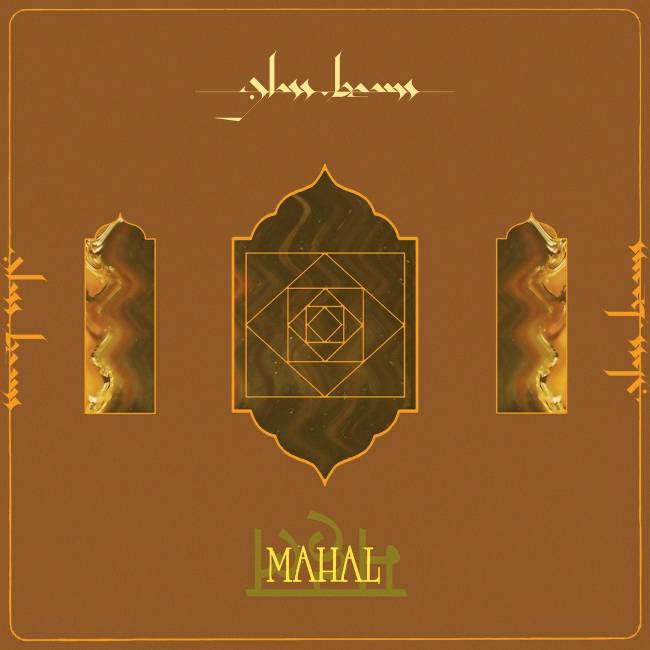
Album Review: Australian Experimental Trio Glass Beams Shares 5-track EP Mahal via Ninja Tune
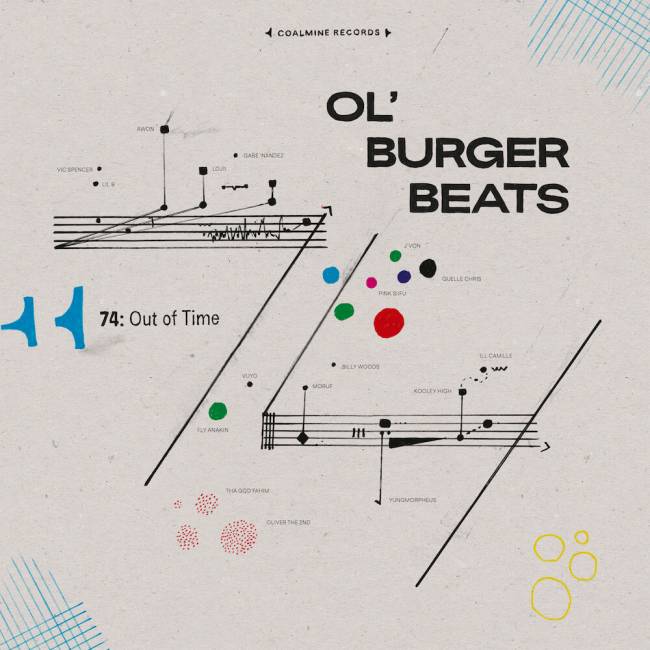
Album Review: Ol' Burger Beats Travels Through Time & Space with Lush & Feature-Packed 74: Out of Time
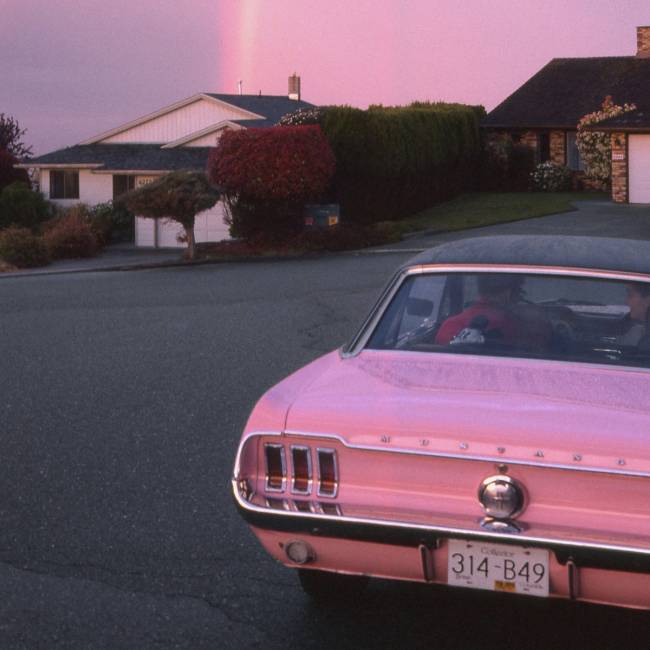
In 2016 dné Created His Timeless Album These Semi Feelings, They Are Everywhere (Album Review)
Tracks you might like.
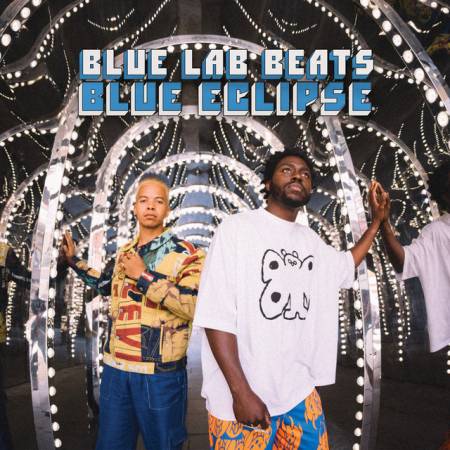
Sunset in LA
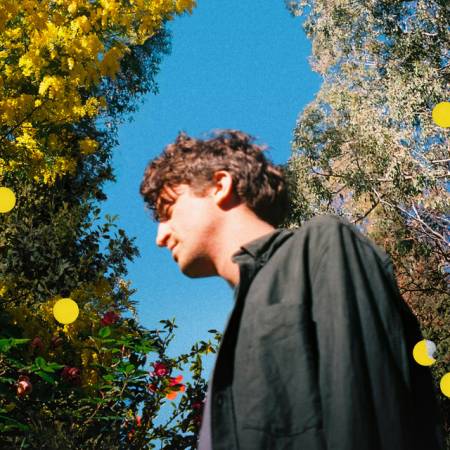
We use cookies

We use some cookies and tracking in order to provide better service. You can read all about it in our Privacy Policy.
Trip-Hop Artist Highlights
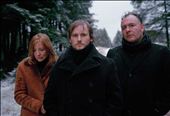
Trip-Hop Album Highlights
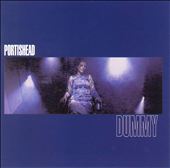
Trip-Hop Recent Releases
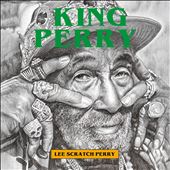
Trip-Hop Song Highlights
Other styles in downtempo.
- International edition
- Australia edition
- Europe edition
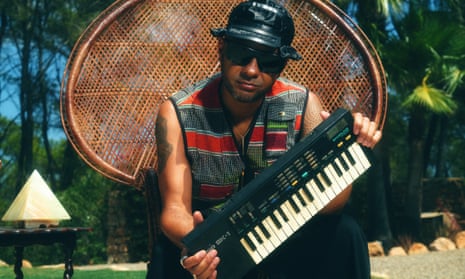
‘Music dug up from under the earth’: how trip-hop never stopped
Fused from jungle, rave and soul, trip-hop filled the coffee tables of the 90s, and is now inspiring Billie Eilish’s generation. So why is the term so despised by many?
N obody really wanted to be trip-hop. The stoner beats of Nightmares on Wax’s 1995 Smokers Delight album were era defining, but it carried the prominent legend: “THIS IS NOT TRIP HOP”. James Lavelle’s Mo’ Wax label flirted with the term after it was coined by Mixmag in 1994, but quickly switched to displaying it ostentatiously crossed out on their sleeves. Ninja Tune did print the phrase “triphoptimism” on a king size rolling paper packet in 1996, but only as a joke about escaping categories.
“I always disliked the term,” says Lou Rhodes of Lamb, “and I would always make a point in interviews of challenging its use in regard to Lamb.” Mark Rae of Rae & Christian similarly says: “I would give a score of 9/10 on the lazy journalist scale to anyone who placed us in the trip-hop camp.” And Geoff Barrow’s ferocious hatred of the term – let alone its application to Portishead – has become the stuff of social media legend.
The distaste is understandable. The template of crawling beats, cinematic strings and dubby basslines, usually with a female vocalist and weed-smoking signifiers, became one of the most ubiquitous sounds of the late 90s. The phrase itself stretched to become a catch-all for any and all downtempo music, from wafty supermarket-checkout budget CD “chillout” to highly crafted UK soul. It very quickly became the object of snobbery, called “coffee table music” by those who found the idea music could be comforting or domesticated an anathema.
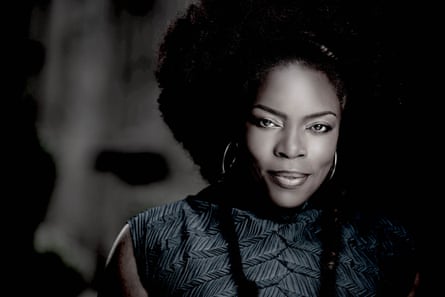
But whatever you call it, the specifically 90s downtempo vibe abides. Nightmares on Wax’s new album, Shout Out! To Freedom …, shows producer George Evelyn as committed to cosmic beats, and as inspired, as ever, and Smokers Delight got a deluxe reissue treatment last year. Martina Topley-Bird ’s Forever I Wait (featuring several productions by Robert “3D” Del Naja of Massive Attack), the reformed Sneaker Pimps’ Squaring the Circle, and even Saint Etienne ’s mostly instrumental I’ve Been Trying to Tell You all meander moodily in classic trip-hop style. Jhelisa , whose albums in the 90s easily bridged the gap between trip-hop and acid jazz, is back and on spectacularly trippy form with 7 Keys V.2, too.
And perhaps even more significantly, younger musicians are channelling the sound. Some of the most high-profile acts in the world – Billie Eilish, Lana Del Rey, Lorde – are unabashed in these 90s references. Alicia Keys’ new single, Best of Me, couldn’t be more trip-hop if it was made in a smoky Bristol basement in 1995. In the leftfield, acts such as Young Echo, Tirzah and Space Afrika explore some oddly familiar dark, dubby spaces, the latter citing Tricky as a key precedent. A lot of the new UK soul and jazz, from Jorja Smith through Children of Zeus to Moses Boyd and Sault, is distinctly trip-hoppy; Arlo Parks’ Mercury prize-winning album is steeped in it, as is tattooed, cosmic dub-soul provocateur Greentea Peng. Homebrew “lo fi” remixes of anime and game themes, which could easily pass as trip-hop, regularly clock up tens of millions of streams on YouTube, as do streams of trip-hoppy “beats to study/chill/sleep to”. Even UK drill is demonstrating a connection, in the album False Hope by Tara Mills , with music by drill and road rap producer Carns Hill. “It’s interesting that whole era’s come round again,” says Evelyn, remarking on the extraordinary Afghan-German producer Farhot’s similarity to DJ Shadow. “Then of course you start thinking: am I that old?”

To understand the durability of these sounds, it’s worth looking at some of the objections to the way they were labelled. Evelyn grew up with reggae soundsystem culture and was a hip-hop and electro fanatic, who breakdanced competitively as a teen. He regarded his early rave tunes as hip-hop collage in the tradition of instrumentals by Mantronix, Marley Marl, DJ Red Alert and co. “But,” he says, “in the UK we’re really good at taking something and making it our own, and when I think about that whole 90s period, it was exciting: we were doing that whole downtempo thing, but fused with all that other exciting electronic shit that was happening at the same time. The drum’n’bass thing, the jungle thing, that was all born out of the same set of influences. I do think about the 90s a lot. It was exciting; it felt like a new sound was coming out of the UK every three days.”
Rhodes, too, took inspiration in the breakbeat collage of rave. “Our background was nights at the Haçienda and Manchester pirate stations,” she says, remembering Peter Bouncer’s vocal over Shut Up and Dance’s breakbeats on the 1992 rave track Love Is All We Need. “My mum was a folk singer, and I felt the pull to write songs that danced around those fucked-up beats. That was the impetus for Lamb.” The closeness to techno, rave and electronica was embodied in labels such as Warp, Ninja Tune and Mo’ Wax, where Squarepusher, Autechre, Roni Size and Carl Craig would sit alongside – or remix – downtempo acts. It’s a lineage explored in the 2020 book Bedroom Beats & B-Sides by Laurent Fintoni , which also explores how trip-hop influenced the likes of Flying Lotus (an avowed Portishead fan), and thus the experimental “beat scene” and 21st century hip-hop more broadly.
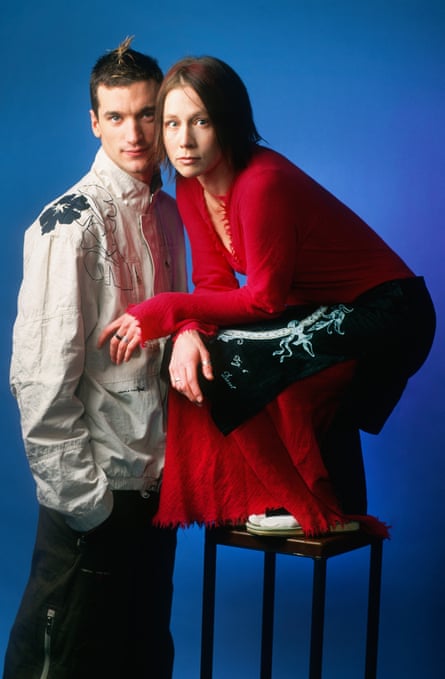
The other vital precursor was the UK’s unique soul lineage. “Sade, Cymande, Soul II Soul,” remembers Evelyn, “that was the foundation of our whole thing too. Even when we were rocking [reggae] soundsystems, you’d always have that half-hour or so when they’d play street soul or rare grooves. That all influenced all of us; I’m sure someone like [Massive Attack’s] Daddy G would say the same thing.” Through the late 80s and early 90s, acts such as Smith & Mighty, the Sindecut, Young Disciples and, of course, Soul II Soul and Massive Attack made a very distinctly British laid-back breakbeat sound ubiquitous from charts to underground clubs. The acid jazz movement overlapped with this, too: it’s the scene Mo’ Wax emerged from, and Liam Howe of Sneaker Pimps recalls, around 1993, “taking our white labels around the record shops of Soho, where you might bump into [acid jazz movers] Kevin Beadle, Gilles Peterson, James Lavelle and Patrick Forge … we were making peculiar, laid-back dance stuff that at the time we referred to just as ‘head music’.”
Jhelisa Anderson is one of the more obvious connections to the soul/jazz world, but also one of the few musicians who fondly embraces “trip-hop” as a term. Mississippian by birth, she relished British eccentricity and independence, as compared with a US industry that “would’ve had me trying to copy Janet Jackson”. She found, in Portishead , Tricky and Topley-Bird, “a version of modern blues, a depth and darkness” that drew a line from 60s and 70s soul, but also had a connection to “something old and pagan that I heard in Thom Yorke and shoegaze, a different kind of ancient expression of feeling blue, of being dark”.
That conception of a kind of specifically British blues isn’t so far fetched. Tara Mills wasn’t born when Massive Attack’s Unfinished Sympathy came out, but cites it as one of her favourite songs: “I’ve cried to that song, I’ve driven home too fast, upset, in the middle of the night, to that song.” And she found precisely the right darkness in Carns Hill’s drill beats to “make you feel something in that same way”. And the moodiness and melancholy have permeated through to a new generation in many other ways. Rhodes hears “a kind of bloodline running through James Blake and the xx” to Billie Eilish and co. Her son Reuben, who releases downtempo beats as Joseph Efi, connects the “Bristol sound” of Portishead and Massive Attack to the ineffable sadness of Burial. “There’s something about the melancholia of those Bristol tunes,” he says, “that could’ve only come from the depths of a small British city. Music dug up from under the earth or heard in the pouring rain on your walk home at night.”

This mood has gradually spread around the world. As well as through electronic and hip-hop artists such as Flying Lotus, and ubiquity of tracks such as Rob Dougan’s Mo’ Wax hit Clubbed to Death in Hollywood soundtracks, the British moodiness found its way into big pop exports. Mark Rae notes that “our production and writing of the track The Hush by Texas-influenced Dido, and the domino effect is created when that language is taken to the mainstream successfully”. It’s not a big leap to hear trip-hop echoes in Mark Ronson’s work with Amy Winehouse and Adele – and there are direct connections, too: Howe, for example, has passed on the trip-hop gene as a writer and producer for the likes of FKA twigs, Lana Del Rey and, indeed, Adele.
It seems like the further we get from its origins, the less toxic the phrase seems. Even Topley-Bird, who never accepted it at the time “because I thought we felt pretty unique”, says “in America people talk about trip-hop without any sense of shame or embarrassment, which is endearing … And a few friends are telling me that artists like Billie Eilish sound like me – which can’t be a bad thing. I came back with new music at the right time!”
Nightmares on Wax’s album Shout Out! To Freedom … is out now on Warp. Mark Rae’s novel and soundtrack The Caterpillar Club is out now on Mark’s Music. Sneaker Pimps’ album Squaring the Circle is out now on Unfall. Jhelisa’s album 7 Keys V.2 is out now on Dorado. Martina Topley-Bird’s self-released album Forever I Wait is out now. Tara Mills’ album False Hope is out now on CL Management. Joseph Efi’s EP Candour is out now on Lowlife.
- Pop and rock
- Martina Topley-Bird
- Massive Attack
- Drum'n'bass
Comments (…)
Most viewed.
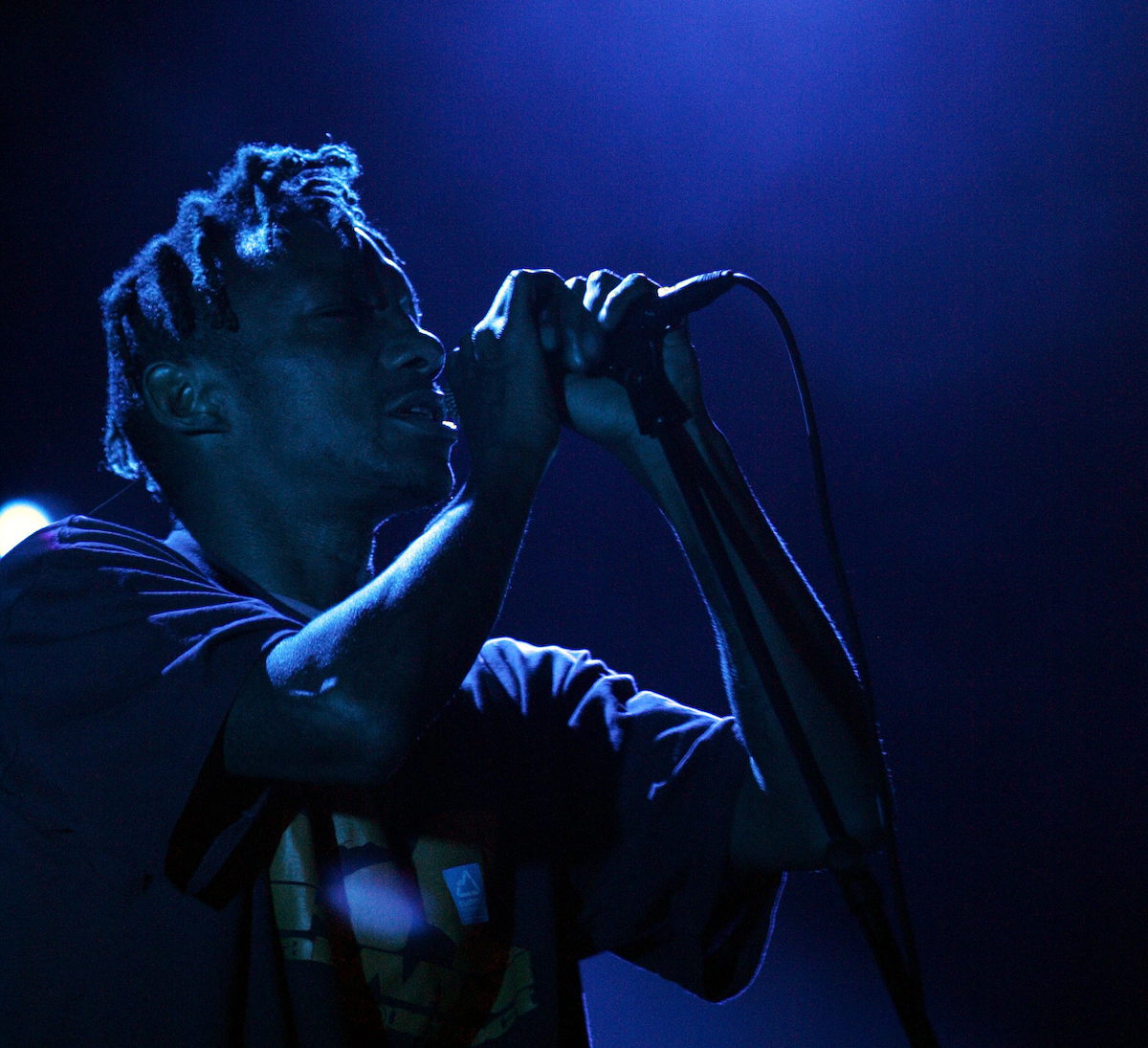
Exploring Trip Hop: A Sonic Journey through Definition, History, and Influential Artists
Table of Contents
Introduction
In the vast realm of music genres, one that stands out as an enigmatic and evocative entity is trip hop. This genre, characterized by its blend of electronic beats, downtempo rhythms, and a myriad of atmospheric elements, has left an indelible mark on the music landscape. From its humble beginnings to its widespread influence, trip hop has captured the hearts of listeners and continues to intrigue new generations. This article embarks on an exploratory journey through the essence of trip hop, delving into its definition, tracing its historical roots and development, exploring related genres, and highlighting influential bands and albums that have defined the genre.
Defining the Trip Hop Sound
At its core, trip hop is a genre that defies easy categorization. It’s a hybrid sound that emerged from the electronic and hip-hop scenes, blending together an eclectic range of influences. Trip hop is known for its downtempo beats, often hovering around 90 to 110 BPM, creating a relaxed yet engaging sonic experience. It marries electronic production techniques with elements of hip-hop, jazz, soul, and ambient music, resulting in a moody and atmospheric sound that can transport listeners to otherworldly realms.
The term “trip hop” itself is believed to have been coined by journalist Andy Pemberton in a review of the album “Dummy” by Portishead in 1994. The name aptly captures the genre’s ability to take listeners on a mental journey, often accompanied by a contemplative or introspective mood.
Tracing the Roots: The History and Development
The Origins: The inception of trip hop can be traced back to the early 1990s, when the city of Bristol, UK, served as a fertile ground for musical experimentation. This city’s underground club scene became a breeding ground for innovative artists seeking to break free from conventional genre boundaries. The influences of hip-hop’s rhythmic intricacies, dub’s textural richness, and the nascent electronic music culture converged, giving birth to a sound that defied categorization.
Massive Attack: Pioneering the Sound: A name that stands tall in the annals of trip hop history is Massive Attack. The release of their debut album “Blue Lines” in 1991 marked a pivotal moment for the genre’s evolution. This groundbreaking work introduced a mesmerizing blend of smooth rhythms, soulful vocal samples, and an urban aura. Tracks like “Unfinished Sympathy” encapsulated the genre’s potential to resonate emotionally while delivering intricate production techniques.
Portishead’s “Dummy”: Redefining Trip Hop: The year 1994 witnessed a significant turning point with the release of Portishead’s “Dummy.” This album not only redefined trip hop but also garnered acclaim that extended far beyond its genre’s boundaries. The haunting vocals of Beth Gibbons, paired with Geoff Barrow’s meticulous production, created an atmosphere that was both dark and cinematic. Tracks like “Sour Times” and “Glory Box” showcased the album’s ability to evoke deep emotions through its fusion of melancholic melodies and inventive production.
Tricky’s Gritty Edge: Tricky, a collaborator on Massive Attack’s “Blue Lines,” emerged as another defining figure in the genre’s development. His debut album “Maxinquaye” (1995) brought a gritty and experimental edge to trip hop. Tricky’s unique blend of hip-hop, punk , dub, and industrial music elements presented a darker and more enigmatic side of the genre. The album’s amalgamation of haunting vocals and dissonant textures resonated with those seeking a more unconventional sonic experience.
Bristol Sound and Urban Aesthetics: The emergence of the “Bristol Sound” emphasized the city’s pivotal role in shaping trip hop. This subgenre embraced a more diverse sonic palette, blending elements of trip hop with reggae, funk, and even rock . Acts like Portishead, Massive Attack, and Tricky exemplified the urban aesthetics that characterized Bristol Sound, where introspection met urban decay in a mesmerizing sonic landscape.
Diverse Inspirations and Global Influence
DJ Shadow’s Sonic Mosaic: The United States made its mark on the trip hop landscape with the emergence of DJ Shadow. His debut album “Endtroducing…..” (1996) revolutionized sampling and manipulation techniques, crafting an entire album from a rich tapestry of samples. This intricate sonic mosaic showcased trip hop’s potential to create immersive experiences that blurred the lines between composition and collage.
Traversing Cultural Boundaries: While the genre found its roots in the UK and the US, it transcended geographical borders. DJ Krush, hailing from Japan, added a distinctive Eastern flavor to trip hop. His album “Meiso” (1995) skillfully merged traditional Japanese sounds with the genre’s characteristic beats, resulting in an album that resonated with a global audience.
Influential Artists and Defining Albums
The landscape of trip hop is adorned with visionary artists who have not only defined the genre but also reshaped the contours of modern music. Their groundbreaking albums remain as milestones that continue to resonate with audiences across the globe.
Massive Attack – “Mezzanine” (1998): Building upon their previous successes, Massive Attack’s “Mezzanine” stands as a testament to their evolution and innovation. The album’s dark and brooding atmosphere, coupled with its intricate production, showcased the band’s ability to capture emotions through sound. Tracks like “Teardrop” featuring Elizabeth Fraser are prime examples of how Massive Attack expertly combined ethereal vocals with hypnotic beats to craft an otherworldly experience.
Tricky – “Maxinquaye” (1995): Tricky’s debut album, “Maxinquaye,” emerged as a force that defied conventions. This album, named after his late mother, delved into the depths of his emotional psyche, resulting in a sonic tapestry that intertwined trip hop with elements of punk, dub, and soul. Tracks like “Hell is Round the Corner” epitomize Tricky’s ability to infuse raw emotion into his music, blurring the lines between genres and leaving an indelible mark on the genre’s history.
Portishead – “Dummy” (1994): Portishead’s debut album “Dummy” not only gave the genre its name but also etched their name in trip hop history. The album’s haunting beauty, juxtaposed with melancholic undertones, created an atmospheric landscape that left listeners captivated. Songs like “Glory Box” and “Sour Times” showcased Beth Gibbons’ distinctive voice and the band’s mastery of tension and release, setting the bar for emotional depth within trip hop.
Morcheeba – “Big Calm” (1998): Morcheeba’s sophomore effort “Big Calm” epitomized the genre’s ability to fuse electronic beats with soulful melodies. Skye Edwards’ sultry vocals combined with lush arrangements, producing an album that perfectly encapsulated the laid-back yet emotionally charged essence of trip hop. Tracks like “The Sea” and “Part of the Process” exemplify Morcheeba’s signature sound that resonated with a wide audience.
DJ Shadow – “Endtroducing…..” (1996): DJ Shadow’s debut album “Endtroducing…..” rewrote the rules of sampling and composition. This instrumental masterpiece showcased his expertise in crafting intricate sonic collages from an extensive range of samples. The album’s immersive quality and attention to detail earned it a place among the most influential records in trip hop history, inspiring a generation of electronic music producers.
UNKLE – “ Psyence Fiction ” (1998): UNKLE, spearheaded by James Lavelle, delivered a genre-defying experience with “Psyence Fiction.” Collaborations with diverse artists like Thom Yorke of Radiohead and Richard Ashcroft of The Verve resulted in an album that pushed the boundaries of trip hop. Tracks like “Rabbit in Your Headlights” combined haunting vocals with intricate electronic arrangements, reflecting UNKLE’s exploration of the genre’s sonic potential.
Legacy and Beyond
The enduring influence of these artists and their defining albums has paved the way for future generations of musicians and producers. As the genre continues to evolve, the spirit of experimentation and sonic exploration remains at its core. From the introspective moods crafted by Portishead to the experimental fusion of Tricky and the sonic landscapes painted by Massive Attack, the legacy of these influential artists is a testament to the lasting impact of trip hop on the world of music.
Continued Influence and Modern Resonance
Chillwave’s Dreamy Revival: In the 2000s and beyond, trip hop’s influence reverberated across genres like chillwave . Acts like Washed Out and Tycho incorporated trip hop’s dreamy soundscapes into their own music, infusing it with modern electronic sensibilities. This revival demonstrated the enduring appeal of trip hop’s atmospheric allure.
Lo-fi Hip Hop’s Digital Oasis: The digital age ushered in a new era of lo-fi hip hop beats, often accompanied by captivating visuals. These beats drew heavily from trip hop’s relaxed rhythms, offering a backdrop for study sessions, relaxation, and contemplation. Online platforms became havens for these beats, with creators curating seamless mixes that captured the essence of trip hop’s tranquility.
Unraveling Trip Hop’s Legacy
As the journey through trip hop’s rich history unfolds, it becomes clear that the genre is far more than a musical classification. It’s a tapestry of diverse influences, a testament to the power of sonic exploration. From Massive Attack’s pioneering endeavors to Tricky’s enigmatic soundscapes and Portishead’s emotional depth, trip hop has left an indelible mark on the world of music. Its evolution continues to inspire artists across genres, reminding us that music’s capacity for innovation knows no bounds. Whether experienced in dimly lit clubs or through headphones in quiet solitude, trip hop invites us to traverse its textured landscapes and embark on a sonic journey that defies conventions and expectations.
- Skip to main content
- Keyboard shortcuts for audio player
Local Groove Does Good: The Story Of Trip-Hop's Rise From Bristol
Vivien Goldman

The Wild Bunch — soon-to-be Massive Attack — at the Dug Out Club in Bristol. Photo by Beezer hide caption
The Wild Bunch — soon-to-be Massive Attack — at the Dug Out Club in Bristol.
Sinuous and mysterious as a plume of drifting smoke, a new sort of groove wafted two decades ago from Bristol, a bohemian university town in the west of England. Though its prime movers — Massive Attack , Tricky and Portishead — all loathe the term, the word "trip-hop" has become synonymous with the style created by Bristol bands like Massive Attack and Smith & Mighty. The sensuous groove fulfilled a timeless human need for a bass-heavy sound to touch the secret recesses of the imagination and lure our dreamworld onto the dance floor. Trip-hop was tailor-made for the moment — and it happens every night — when a bopper wants to get tender. Or when domestic listeners seek to wander within themselves.
Not all local grooves take flight, but trip-hop most certainly did. Over the next two decades it was re-imagined as chill-out, downtempo, illbient and lounge music. Its subtle tendrils have woven into music round the world: Washington, D.C.'s Thievery Corporation , with their exotic cosmopolitan edge; drifty Brazilian sounds like Ceu , whose dulcet lilt earned her maximum market penetration (a Starbucks CD); London's Ninja Tunes' artists like Bonobo and Berlin's techno-tinged Sonar Kollektiv. As music writer Simon Reynolds notes, "People like Flying Lotus and Gonjasufi on the West Coast are doing trippy hip-hop. Though it's not quite the same thing, they probably are the inheritors of the spirit of Massive Attack, Tricky, Earthling and DJ Vadim."
To qualify as true trip-hop, music has to share the sense of opiated mystery of Tricky's tantalizing mumbles on the classic album, 20 years old last year, that launched trip-hop worldwide, Massive Attack's Blue Lines. Its magical " Unfinished Sympathy ," cast a spell over the world's clubbers. Produced by Nellee Hooper (later of Soul II Soul and Bjork , among many others) the well-timed sound was just one manifestation of a movement taking place in Bristol at that time.
Scene initiators included Smith & Mighty and the DJ collective The Wild Bunch, from which came Massive Attack and Tricky. The Pop Group's volatile post-punk added another element to the scene, later splitting into the savage free explorations of Float Up C.P. and horn-happy Pigbag.
Bristol fed off its slave port for hundreds of years; now it's one of Britain's blackest cities, culturally and socially. It's long been home to a West Indian community, and shebeens and sound systems were a way of life for all music-loving Bristolian youth. Being a port, Bristol was always awash in hashish and other plant-based mind-benders like marijuana — not to mention more macrobiotically sound, locally-grown life-enhancers like scrumpy cider and hallucinogenic mushrooms (legal back then) grown in the surrounding countryside — that undoubtedly fuelled Bristol's music scene.
Much of this musical experimentation took place at a club called The Dug Out. As Hooper has said, "The Dug Out couldn't have had a better location, at the top of the hill from St Paul's — the heart of the black music scene — and just down the hill from Clifton and the trendy punk/art scene. It was just dangerous enough for trendies to feel edgy, music cool and edgy enough to confuse and enthuse the dreads ... perfect!"
Disclosure: I got a chance to explore Massive Attack's creative process first hand over a few years. What follows is a typically incestous Bristolian saga. The links between town and gown — the students and the locals — plus the charming city's many liberal artsy types, made for a scene with a hectic social, creative and romantic dynamic.
Blue Lines was born in an upstairs bedroom of the terraced West London home of Afro-Swedish hip-hop diva Neneh Cherry and her producer husband, singer Cameron McVey. Before her solo hits began with " Buffalo Stance ," Neneh sang with Float Up C.P., and as her first husband was Bruce Smith (drummer for the Pop Group and The Slits, with whom Neneh also sang), Bristol was yet another home to her. The young Massive Attackers, Daddy G, 3-D, Mushroom and Tricky, became Cherry and McVey's protegés. They took over the small side bedroom, soon cluttered with reel-to-reels and tape machines, and a record deck on which they would earnestly sift through possible samples. A superb chef, my friend Neneh would be in the kitchen concocting feasts in between writing rhymes, with Massive Attack wandering in for cups of tea.
Years later, after the band had released Blue Lines and were preparing the album that became Protection , I visited Bristol to collaborate with them, eventually co-writing the track " Sly ." Sample-based songwriting in those pre-digital days could be laborious. I bought a child's Casio keyboard to help fill the gaps, which came in handy for "Sly," but the process often involved someone getting on their bike and cycling down to the second-hand record shop to try and locate half-remembered grooves that might be just right to fulfill the elusive conception of a song.
Bring back the bike, because the tunes the Massives assembled by hand, between cups of tea, opened a poetic, evocative, emotional vein of music, which is still connecting hearts today.
10 Key Trip-Hop Tracks
Neneh cherry on "lately" by massive attack.

From 'Blue Lines'
By Massive Attack
Sonically, it's the ultimate trip-hop track, really beautiful. When they were working on it in our house in Mortimer Road, West London, I remember lying in bed hearing it floating round the house and the feeling of being a silent witness to something really great happening. It would send me off into a beautiful dream space sleep. What I love about trip-hop is the bottom end, the sexiness of the downbeat which also gives it a blues-y sort of melancholy. It's the English interpretation of hip-hop, bringing the bass and bottom end from reggae into it. Why Bristol? All the people I know from there are hardcore individuals. It breeds some eccentric thinkers.
Singer-songwriter NENEH CHERRY is an anchor of the Bristol scene. She sang with The Slits, Float Up C.P. and is now with the band CirKus. She is working on two new albums.
Ray Mighty on "Anyone" by Smith & Mighty

From 'DJ-Kicks'
By Smith & Mighty
To hell with false modesty!
RAY MIGHTY is half of the production duo Smith & Mighty.
Rob Smith on "King Tubby Meets the Rockers Uptown" by Augustus Pablo

From 'King Tubbys Meets Rockers Uptown'
By Augustus Pablo/King Tubby
To be very honest, we all hated the term 'trip-hop'! The phrase was coined, I believe, by a non-Bristolian journalist, Dom Phillips, who in my mind was very underqualified to be making any opinions about the scene at that time. I remember we played with Tricky at Hammersmith. During Tricky's set, he shouted, "Who likes trip-hop?" A few people in the audience shouted, "Yaee!" and he replied, "Well f--- off home then!"
Bristol artists were not afraid to mix and blend styles, thus coming up with fresh sounding tunes. Also Bristol is far enough away from London that there wasn't the same need to compete or chase trends. Bristol had its own pace and tunes were often left to stew longer.
ROB SMITH is half of the production duo Smith & Mighty.
Mark Stewart on "Aftermath" by Tricky
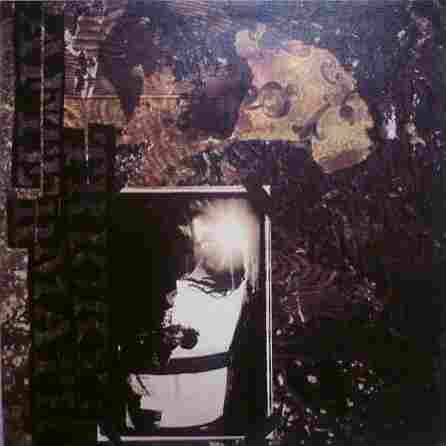
From 'Aftermath EP'
His first single. I made it with him and Martina Topley-Bird. We were desperate for a girl singer. 8 o'clock in the morning, stopped at some traffic lights on the way to the studio. Two school girls in their uniform at a bus stop — me and Tricky shouted across saying, "Can either of you sing?" Martina said yes, and two stars were born: Tricky and her.
The Wild Bunch (as well as 3D, Daddy G, DJ Milo, Willie Wee and Tricky Kid) — my boys. They call me The Godfather, but in fact some of them are older than me, I just started making music when I was 16.
Big up the mad skillz of generation next Bristol bass of Appleblim, Kahn and Joker dropping science — the new kids from Bristol.
MARK STEWART is the singer for The Pop Group and Mark & the Mafia. His new album, The Politics of Envy , will be released in March and includes collaborations with Primal Scream and others.
Bruce Smith on "Glory Box" by Portishead

From 'Mysterious Heads'
By Portishead
"Glory Box" is a GREAT record, very sexy. I associate that track with sex. And Tricky's first album is very good, very creative. I think the genre is interesting as it is a particularly English take on a North American cultural phenomenon. In Bristol the West Indian influence is huge, so the interpretation of hip-hop — an aggressive music — was made from that perspective, with the influence of dub being the key element.
I spent my late teens absorbed by reggae in Bristol. Had an enormous effect on me and still does in the way I play the drums to this day.
BRUCE SMITH is the drummer for The Slits, The Pop Group and Public Image Limited.
Dick O'Dell on "Karmacoma" by Massive Attack

From 'Protection'
Trip-hop happened in Bristol because of the strong West Indian community from slave trade times combined with middle class white boyz getting seriously spliffed up in the Dug Out!
DICK O'DELL was the manager of The Pop Group and now manages Bat for Lashes.
Cameron McVey on "Any Love" by Massive Attack

From 'Singles 90/98'
It was the very first Massive Attack 45, before me and Neneh started working with them. Smith & Mighty produced it, who I was trying to work with at the time, with Chris Parry, the manager of The Cure. I love Portishead too, and I'd also like to pick Horace Andy's "One Love," with Massive Attack .
Trip-hop was born in Bristol because a lot of 6' 5" Masai warriors must have jumped ship during the slave trade! That's why Bristol has street names like Black Boy Hill and White Lady Road. Bristol is where reggae mixed with hip-hop. It's mad. It's so profound.
CAMERON MCVEY is a singer, songwriter and producer for Neneh Cherry, CirKus and more.
Beezer on "Small World" by Smith & Mighty

From 'Big World, Small World'
The Dug Out was a meeting spot for the ghetto and Poshville where black and white would hang out. We were there almost every night, playing disco, funk and punk. It was our Studio 54, and it put Bristol on the map. We were totally into dub and reggae; it was an amalgamation of cultures with no barriers.
We didn't know we were part of something that would be influential later, but even at the time it felt like something special was going on, although it was still just, like, going out on a regular Wednesday night.
BEEZER is a photographer who chronicled trip-hop in the mid-'90s.
Tessa Pollitt on "Unfinished Sympathy" by Massive Attack
I choose everything dear ol' Tricky has put out. The Slits were often in Bristol and I have always loved and respected the "Brizzle" scene. So much innovative music and talent has come from there and has influenced following generations musically.
Let's face it, reggae from Jamaica has influenced us all in the U.K. from old steppers to jungle, drum and bass, dubstep, trip-hop, grime etc. The original rapper was U Roy, [J.A].
But Bristol has something special about it. Must be the Ley Lines (lines of energy running beneath the earth) and the huge hills you have to climb like in San Francisco. And probably the amount of Jamaicans that came here way back in the windrush era, 1950s.
TESSA POLLITT is bass player for The Slits.
Martina Topley-Bird on "Aftermath" by Tricky

From 'Maxinquaye'
It's the only Tricky song I recognize as a trip-hop song (still hard to write those words even now), and it was our first single. Mark Stewart was there. I'd just turned 16. Recorded in a squat studio in Bristol.
I arrived in Bristol when I was 13. I like that Bristol is really mixed racially, more so than anywhere else in England, even London, for me at the time. It was smaller and there were no great swathes of land for people to be segregated to.
I think how it's laid out as a city has its own effect on the psyche of its dwellers — and the weather. Back then it was England before shops were open on Sundays. Some parts were melancholy, and some parts were bleak. But the suspension bridge was beautiful and the gorge. It has history as a slaving port too.
It was the generation before me that started making this music though. I heard more than I saw with my own eyes about Blues dances and Sound Systems.
MARTINA TOPLEY-BIRD is a vocalist with Tricky and Massive Attack. She's working on new material now.
- Massive Attack
- Augustus Pablo
What Is Trip Hop? Dreamy Depths Of Downtempo Grooves
The psychedelic subgenre of Hip Hop has long offered a trippy alternative to the mainstream sound.
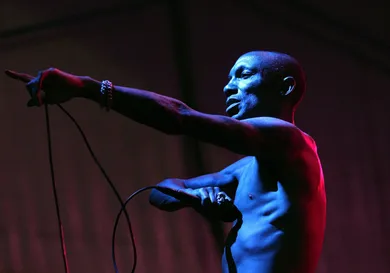
Hip Hop has spawned a number of subgenres since its inception in the 1970s. Over the years, several of these have become popular, successfully transitioning into the mainstream. Most recently, trap and drill have been in the spotlight, and may not go out of style anytime soon. While some Hip Hop’s offspring have gained mass appeal and widespread popularity, several are still largely niche. One of these is the dreamy Trip Hop subgenre.
Also known as Downtempo or Downbeat, it is a fusion of Hip Hop and electronic elements, unlike anything that came before it. Despite not being widely popular, the enigmatic fusion has left its mark on the musical landscape since its introduction. Regardless, it certainly deserves to have the word spread about it some more. It could very possibly appeal to a much wider audience as, these days, listeners’ musical palates are much more diverse. Without much ado, let’s dive into the dreamy depths of Trip Hop.
The Origin & Pioneers Of Trip Hop
Trip Hop first emerged in the late 1980s in the Bristol music scene in the United Kingdom. It was influenced by various genres, including Hip Hop, soul, jazz, funk, and electronic music. All in all, artists sought to create a distinct, downtempo sound focusing on atmospheric textures. The Trip Hop sound was championed by many pioneering acts who propagated the psychedelic sound.
Massive Attack, a collective formed in 1988, is often credited as one of the pioneering groups in the genre. Their debut album Blue Lines (1991) blended Hip Hop beats with soulful vocals, and helped lay the foundation for Trip Hop. However, it was their third album, Mezzanine , that became an international sensation, boosting the public’s attention towards the genre. Shortly after, Portishead, another iconic Trip Hop band, released their groundbreaking album, Dummy , in 1994. Emphatically, this album further defined the genre with its haunting melodies and Beth Gibson’s emotive vocals. Tricky, a member of Massive Attack, eventually broke out to become a lauded solo act.
What Does Trip Hop Sound Like?
Trip Hop is a genre characterized by a distinctive set of features. Collectively, these features create a moody, atmospheric, and often hypnotic sound. For example, central to the genre is its often slow, deliberate tempo. The beats are usually laid-back and syncopated, providing a relaxed and contemplative feel.
Another key hallmark of Trip Hop is its emphasis on creating rich, immersive atmospheres. This is achieved through synthesizers, ambient sounds, and production techniques that evoke a dreamlike feeling. True to its name, Trip Hop incorporates elements from Hip Hop, such as drum breaks and the rhythmic flow of rap. However, it tends to deconstruct and slow down these elements, offering a more ambient take on Hip Hop aesthetics.
In addition to those characteristics, many Trip Hop tracks feature sultry, soulful, or haunting vocals. Female vocalists, in particular, are prevalent, contributing to the genre’s passionate and often melancholic vibe. Notable examples include Beth Gibbons of Portishead, Shara Nelson of Massive Attack, Skye Edwards of Morcheeba, and Björk. Over the years, the genre has evolved, and new artists have emerged with different interpretations of Trip Hop. FKA Twigs is one of the more popular artists who make Trip Hop music today. Also, Lana Del Rey has been known to experiment with the genre, particularly in her 2012 album Born to Die .
As a genre that continues to evolve, Trip Hop remains a captivating exploration of sound. It seamlessly blends elements from various musical traditions to create a unique, diverse, and influential genre. Undoubtedly, it is among the more intriguing subgenres of Hip Hop, and is one of the most substantial. While it may be over three decades old, there’s still much more Trip Hop has to offer. As it is a genre that embraces experimentation, it will continue to break the ceiling, transform, and diversify.
- Link Copied to Clipboard! Copy URL
- massive attack
- Rap Subgenres
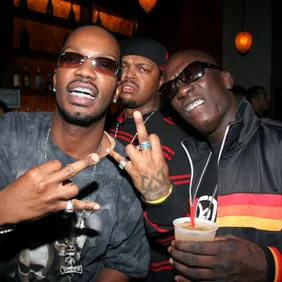

How to Make Trip Hop Music
Imagine trip hop music as a canvas waiting for your creative brushstrokes.
As you delve into the world of trip hop production, you'll find that the genre offers a rich tapestry of sounds and textures to explore.
From crafting intricate drum patterns to weaving moody atmospheres with sampling techniques, there's a multitude of elements that come together to form the distinct trip hop sound.
Whether you're a seasoned music producer or just starting out, understanding the basics of trip hop production can set you on a path to creating captivating and immersive tracks that captivate listeners.
When delving into the basics of trip hop, embrace the downtempo vibe, characterized by a slower tempo around 95 bpm, to capture its electronic yet acoustic and trippy essence influenced by artists like Massive Attack.
Trip hop music hinges on this distinctive tempo, creating a laid-back and hypnotic feel, perfect for delving into the genre's unique sound. Understanding the trip hop basics involves immersing yourself in the intricacies of drum beat creation.
Layering kick and snare elements, incorporating hats and toms for variation, and using headphones for better mixing are crucial elements. Additionally, recognizing the influence of artists like Massive Attack is essential. Approach production with a freestyle mindset, allowing creativity to flow freely to capture the essence of trip hop.
These basics set the foundation for crafting trip hop music that resonates with its distinctive vibes and overall mood. It's about diving into the unique rhythm and style, embracing the electronic yet organic feel, and understanding the nuances that make trip hop a genre like no other.
To achieve a laid-back and hypnotic feel in your trip hop music, begin by experimenting with a slower tempo ranging from 90 to 100 bpm for your drum patterns. This tempo range sets the foundation for the relaxed vibe characteristic of trip hop music.
Here's how you can craft laid-back drum patterns:
- Layer kick and snare elements to create a relaxed yet punchy rhythm, providing a solid backbone for your track.
- Incorporate hats and toms for subtle variation and depth in the drum pattern, adding texture and groove to the overall sound.
- Consider using headphones for precise mixing and nuanced placement of drum elements, allowing you to finely tune the subtleties of your drum pattern.
- Focus on a freestyle approach to drum beat creation, drawing influence from trip-hop legends like Massive Attack, allowing yourself to play with different rhythms and sounds to find a unique and captivating groove.
Experiment with various sampling techniques to create moody atmospheres that will enhance the emotional depth and texture of your trip hop music. Start by delving into vinyl records, capturing their vintage and atmospheric sounds to infuse your tracks with a sense of nostalgia and depth.
Additionally, integrating field recordings of ambient noises, such as rain, wind, or city sounds, can add an extra layer of richness and complexity to your compositions.
Manipulating vocal samples can also be a powerful tool for creating haunting and emotional atmospheres within your music. Experiment with reversing samples and time-stretching loops to craft surreal and dreamlike sonic landscapes that captivate and intrigue the listener.
Furthermore, layering and blending multiple samples can help you build a rich and immersive sonic environment, allowing for a truly captivating and memorable listening experience.
Can I Use Similar Techniques for Making Trip Hop Music and Playboi Carti Type Beats?
Yes, you can use similar techniques for making trip hop music and Playboi Carti type beats. By following a Playboi Carti type beat tutorial , you can learn how to incorporate the signature sounds and rhythms that give his beats their unique vibe, while still adding your own spin for trip hop tracks.
Delve into the enchanting realm of dreamy melodies and soundscapes by infusing your compositions with ambient sounds and textures. To create an evocative and mesmerizing musical experience, experiment with the following techniques:
- Ambient Sounds and Textures : Layering ambient sounds such as nature recordings, vinyl crackles, or distant conversations can add depth and intrigue to your music, transporting listeners to a different world.
- Reverb and Delay Effects : Harness the power of reverb and delay effects to infuse your melodies with a sense of space and time, allowing them to linger and evolve, creating a hypnotic atmosphere.
- Lush Synth Pads and Arpeggios : Incorporate lush, ethereal synth pads and arpeggios to add a touch of celestial beauty to your compositions, evoking a sense of wonder and tranquility.
- Unconventional Chord Progressions : Explore unconventional chord progressions and harmonic structures to weave a sonic tapestry that feels both familiar and mysterious, captivating your audience with its enigmatic allure.
When mixing and mastering your trip hop tracks, utilize EQ and compression techniques to enhance the depth and dynamics of your music. Use EQ to sculpt the tonal balance, making room for each element in the mix. Experiment with compression to control the dynamics, adding punch and clarity to your trip hop tracks.
Additionally, consider incorporating reverb and delay effects to create a spacious and ethereal atmosphere. These effects can add depth and dimension to your mix, contributing to the signature dreamy quality of trip hop music.
Pay close attention to stereo imaging when mixing your trip hop tracks. Ensure that elements are well-balanced and effectively panned to create a wide and immersive soundstage. Utilize automation to introduce movement and variation, keeping the listener engaged throughout the track.
When mastering, focus on achieving a balanced and polished sound. Pay careful attention to levels, dynamics, and tonal balance to ensure that your trip hop tracks sound cohesive and professional.
Now that you've mastered the art of crafting laid-back drum patterns and sampling techniques, creating dreamy melodies and soundscapes, and mixing and mastering your trip hop tracks, you're ready to unleash your unique sound to the world.
Remember to keep experimenting, thinking outside the box, and staying true to the distinctive trip hop sound. With dedication and creativity, you'll be sure to make a lasting impact in the trip hop music scene.
Keep pushing boundaries and let your imagination run wild.
Fact Magazine
- Exhibitions
Now reading:

The 50 best trip-hop albums of all time
Share this:
- Access All Areas
- Against the Clock
- Documentaries
- FACT Freestyles
- In The Studio
- How To Make A Track
- FACT Premieres
- Record Shopping
- Singles Club
- Dubplate Masters
- The Vinyl Factory Films
Illustration by: Mat Pringle
Like it or not, trip-hop is a thing. I say this as someone who, for the past 18 odd years, has loved the music just as much as I’ve hated the term.
Coined in June 1994 by Andy Pemberton in a feature for Mixmag , trip-hop was used to describe the recent stylistic shift of the Mo’ Wax label and that music’s popularity in dance circles, particularly in after hours sessions. Pemberton heralded trip-hop as a psychedelic take on hip-hop and the first valid alternative to America’s dominance of the music.
The DNA of trip-hop was more complex than its reduction to bite-sized adjectives. One strand came from hip-hop, which had fed the musical imagination of a new generation for over a decade, while another strand came from rave, which had provided further stylistic possibilities with its fusion of drum machines, breaks, samples and synthesisers. Sound systems, digging, dub, chill-out rooms, early globalisation and technology also acted like so many molecules attaching themselves to a new idea of what hip-hop could be. Trip-hop was a logical evolution in a decade during which everyone came down from a partying high to face the reality that hip-hop and dance music were being co-opted by the mainstream; dreams of a new sonic utopia crushed by the relentless onslaught of capitalism.
Just as techno had become a synonym for dance music, trip-hop soon became a crutch for journalists and marketers wanting to signify hip-hop without rappers. Most notably, it became a byword for the Bristol sound epitomised by bands like Massive Attack and Portishead. In 1998, The New York Times retconned Massive Attack’s debut album Blue Lines as the so-called genre’s inception point.
On the ground, the sound did resonate in a genuine way among a new generation of musicians seeking freedom to experiment. In London, Ninja Tune played yin to Mo’ Wax’s yang. Both labels crafted a unique visual dimension and assembled expansive rosters. In Paris, DJ Cam pushed out his own blunted beats to eager continental heads. In Austria, Kruder & Dorfmeister added an extra layer of dub and turned trip-hop into downbeat in a haze of weed paranoia. In New York City, a loosely linked group of artists, thinkers and musicians spread from downtown Manhattan to Brooklyn’s cheap warehouses to imagine their own version of the sound, which The Wire magazine dubbed illbient. No matter the names or the execution, the DNA was the same.
It was always going to end badly. Mo’ Wax, often seen as responsible for the sound, originally kicked off riding the acid-jazz wave, a sound that soon exhausted itself into a creative cul-de-sac. By the late 1990s, trip-hop had become nothing more than limp, often stoner-friendly, coffee table hip-hop beats. It was music for people who felt rap was too dangerous. To those who believed in it though, it always held a promise of things weird and wonderful.
Alongside IDM (another etymological faux pas from the 1990s), trip-hop presaged the beat scene of the late 2000s, a continuation of the ideas and aesthetic it first articulated. When I spoke to Daddy Kev in 2012, he pointed to Mo’ Wax as one of the key influences for Low End Theory. Flying Lotus has cited DJ Krush as an influence. And tastemakers like Gilles Peterson have championed the music’s evolution across decades.
In putting together this list, we tried to take all of this into account. There is no purism to indulge in, because there is nothing pure about trip-hop. As DJ Food’s Strictly Kev put it recently, at its best the music was “psychedelic beat collages, usually instrumental, embracing samples, analogue electronics and dub FX.” The list is contained to the 1990s for historical accuracy and tries to steer away from the music’s strongholds to show the width and breadth of the sound. As such, you’ll find artists from France, Northern Ireland, Japan, America, Denmark and Brazil represented as well as releases from Asphodel, Wordsound, Rephlex, Warp and a handful of majors. It’s also worth noting that when an artist had multiple worthy albums (for instance, Portishead or Massive Attack), we only included their most definitive moment.
Listen to the whole list as a playlist via YouTube or Spotify .

50. London Funk Allstars London Funk Volume 1 (Ninja Tune, 1995)
London Funk Allstars’ Ninja Tune debut will likely sound dated to most who come across it for the first time today. And yet, amid the simple breakbeats, classic loops and obvious vocal chops there’s a real beauty that captures the essence of a simpler time when the possibilities seemed endless and technology was providing new ways to think about music.

49. Bomb The Bass Clear (4th & Broadway, 1994)
Tim Simenon might not be the most obvious pick for a trip-hop list, but Clear exhibits plenty of the genre’s hallmarks. Tossing away the rave collage aesthetic that had made ‘Beat Dis’ such a massive success, Simenon weaves an ambitious narrative, tying together dub and hip-hop-influenced tracks with heady spoken-word clips from writers Benjamin Zephaniah and Will Self. There are also notable contributions from influential figures such as Leslie Winer (if you haven’t heard her 1993 album Witch , you should seek it out immediately), Bernard Fowler and Bim Sherman, opening up a dialogue between New York, Jamaica and the UK that would remain at the center of the genre for years to come.

48. Slicker Confidence in Duber (Hefty, 1998)
John Hughes’s Chicago-based Hefty imprint was crucial in cementing the relationship between Chicago’s burgeoning post-rock scene (led by Tortoise) and the seemingly more experimental (and more European) IDM and trip-hop genres. This union would reach its peak in 2001 with Telefon Tel Aviv’s massive Fahrenheit Fair Enough , but a few years prior, Hughes himself was making similar strides under his Slicker moniker. Confidence in Duber sits firmly alongside Scott Herren’s early Delarosa & Asora experiments, snatching the breaks ‘n’ blunts from trip-hop and injecting them with digital belches cribbed from the IDM playbook. Oddly enough, it’s aged better than you might expect, and is well worthy of re-investigation.

47. Meat Beat Manifesto Subliminal Sandwich (Interscope, 1996)
Subliminal Sandwich is Meat Beat Manifesto’s fourth album and their first on a major label via Nothing Records, a subsidiary of Interscope helmed by Trent Reznor that was intended to capitalise on the success of Nine Inch Nails. The album proved a critical and commercial flop, though it remains an interesting offering, drawing links between trip-hop, dub, industrial and ambient with a touch of psychedelia. Split across two CDs, it’s the first half that’s of most interest here as the rest focused on drone and ambient compositions. The 18 tracks draw heavily on samples and breaks combined with pulsing basslines, heavily processed vocals and an overall gritty finish that makes it sound like the bastard child of Mo’ Wax and Bill Laswell’s Axiom Records.
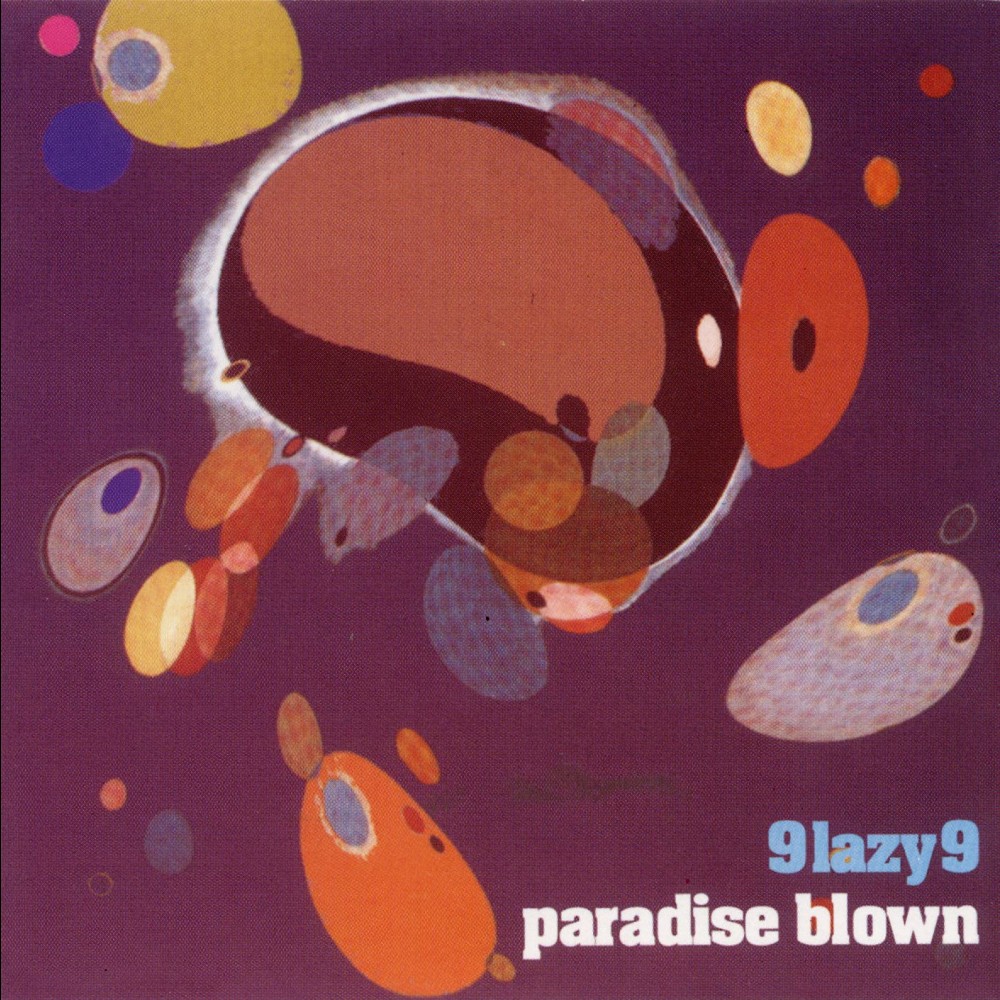
46. 9 Lazy 9 Paradise Blown (Ninja Tune, 1994)
Early Ninja Tune beatmakers 9 Lazy 9 might not sound as crucial now as they did back in the mid 1990s, but there’s still fun to be had on Paradise Blown , their second album. The Italy-based group (including Funki Porcini’s James Braddell) added a distinctly light-hearted lounge quality to a genre that could often dwell in the darker crevices, and as such Paradise Blown can be filed alongside offerings from Tim ‘Love’ Lee and Tipsy, even if it’s not anywhere near as endearingly experimental.

45. UNKLE Psyence Fiction (Mo’ Wax, 1998)
Mo’ Wax boss James Lavelle’s pet project, UNKLE, remains a controversial part of the trip-hop canon. With distance, Psyence Fiction is possibly more enjoyable than it was back in 1998, and it highlights the genre’s crossover potential with guest spots from Radiohead’s Thom Yorke, The Verve’s Richard Ashcroft (then riding high after the success of ‘Bitter Sweet Symphony’) and Badly Drawn Boy, but it’s hard not to see it as a slightly cynical marketing exercise. DJ Shadow, who was drafted to co-write the album, was quick to speak out about his unhappiness with both the process and the result, but Psyence Fiction is representative of a time and place, and shows trip-hop’s promise as it was being co-opted and transformed into something that labels could whitewash and monetize. Zero 7 was just around the corner.

44. Tipsy Trip Tease – The Seductive Sounds of Tipsy (Asphodel, 1996)
It might be a stretch to classify Tipsy as trip-hop, but the Californian duo of Tim Digulla and David Gardner certainly used many of the same tools as their European peers. Pillaging loops from a wide variety of lounge and exotica records, Digulla and Gardner came up with a dusty, defiant and undoubtedly downbeat look at sound collage. Since it veered away from obvious breaks and beats, Trip Tease actually holds up markedly better than some other records of the era, and ends up sounding closer in style to David Holmes, with a smoky, cinematic quality.

43. Justin Warfield Field Trip To Planet 9 (Qwest, 1993)
Released a year before the term trip-hop was coined in Mixmag , Justin Warfield’s first and only solo album is included here largely thanks to Strictly Kev, who recently pointed out its relevance with regard to the music’s supposed psychedelic properties. My Field Trip To Planet 9 is a rap album, cut from the same cloth as Check Your Head -era Beastie Boys and Digable Planets. But remove its vocals and behold music that sounds like it wouldn’t be out of place on Mo’ Wax or Ninja Tune a few years later. At its best, trip-hop was music for b-boys on acid, as Warfield sang on the album’s single. A year later, he provided the vocals for Bomb The Bass’s ‘Bug Powder Dust’, another bonafide rap-on-acid classic that got the trip-hop treatment via Paris’s La Funk Mob and Vienna’s Kruder & Dorfmeister.

42. Smith & Mighty Bass Is Maternal (More Rockers/!K7, 1995)
You can’t have a conversation about trip-hop without mentioning Bristol, and you can’t talk about the Bristol scene without giving a nod to Smith & Mighty. The West Country duo took soundsystem culture and a hefty scoop of the ideas informing an increasingly popular jungle scene and helped formulate an entire sound. Without them, Portishead, Tricky and Massive Attack simply wouldn’t sound the same. Bass Is Maternal is the best representation of their scope, and illustrates their experimentation as they attempted to summarize the meeting point between UK rave culture and Jamaican dub. It’s not always successful, but to ignore it is to disregard an important chapter in British musical history.

41. DJ Vadim U.S.S.R Repertoire (The Theory of Verticality) (Ninja Tune, 1996)
The first of Vadim’s four albums for Ninja Tune, U.S.S.R Repertoire is a weeded-out take on an American musical form by a Russian immigrant living in the English capital – an instrumental microcosm of hip-hop’s globalisation. Beneath a layer of simplicity, there is depth to Vadim’s approach; the beats feel expansive, the music inviting the listener to cradle in the grooves of the breaks and warmth of the bass. Much of this debut also acts as an echo of what Wordsound and We™ were doing across the ocean at the same time. As Vadim’s 1995 debut on his own Jazz Fudge imprint proclaimed, heads weren’t ready.
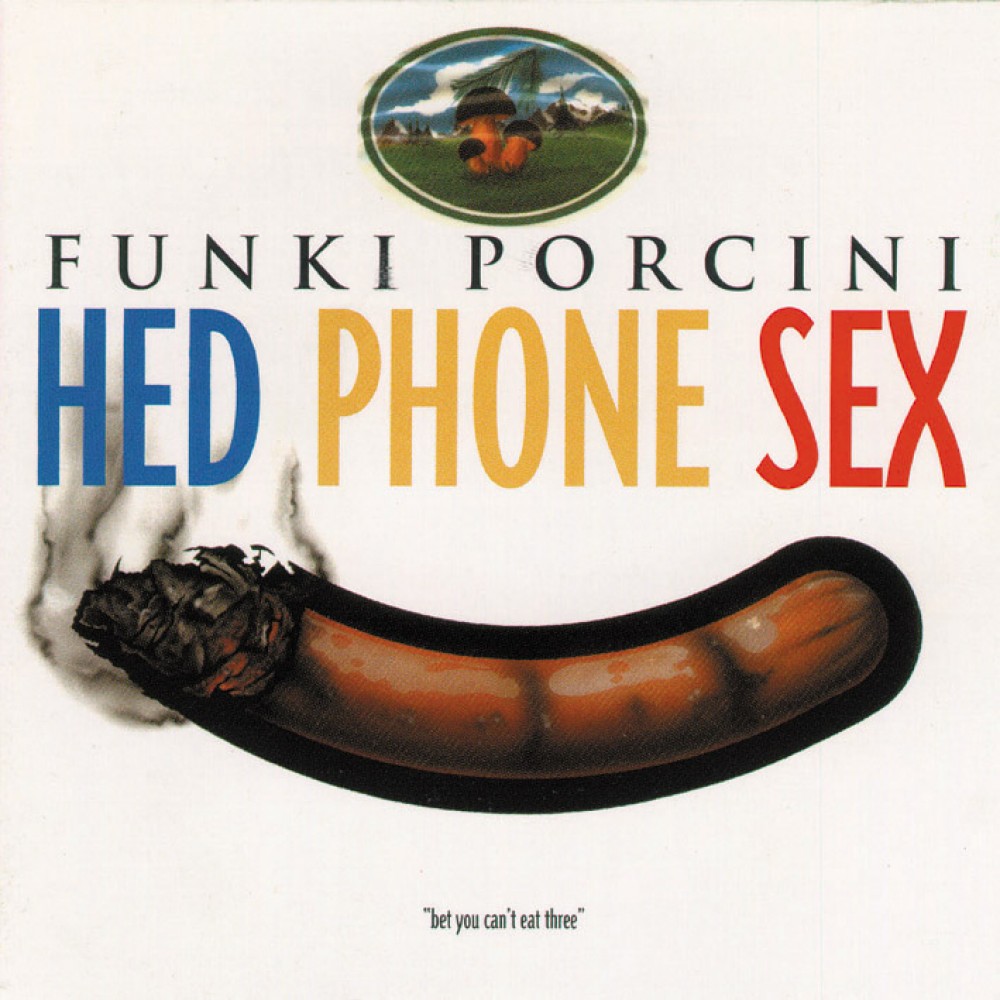
40. Funki Porcini Hed Phone Sex (Ninja Tune, 1995)
After a decade penning film and TV music in Italy, British producer James Braddell decided to head to London and set up his own studio, where he would use some of his commercial writing tricks to come up with Funki Porcini, one of the most recognizable names on Ninja Tune’s early roster. This was trip-hop with a side helping of very English humour, from the moniker itself to the record’s awkwardly suggestive cover. Musically, Braddell laid out a template that would be traced over for years to come with his combination of dusty hip-hop rhythms and booming dub bass. The swirling, reverb-drenched samples just added an extra layer of thick smoke to an already bloodshot premise.

39. Red Snapper Prince Blimey (Warp, 1996)
If the elephant in the room here is acid jazz, Red Snapper are one of the rare acts who addressed it head-on. Prince Blimey is their first full-length and is certainly more overtly jazzy than most of the records we’ve highlighted on this list. That’s not a negative though, the trio – a bassist, guitarist and drummer – had genuine chops, and managed to inject their musical training into a more contemporary mode, touching on trip-hop and drum & bass without ever sounding forced. It’s a concoction that might now sound too close to the coffee table dreck that sat next to a copy of American Psycho and a rolled up tenner at the close of the millennium, but Red Snapper managed, somehow, to keep things edgy and unusual. They even, somewhat inexplicably, ended up touring with The Prodigy.

38. Various Artists DJ Kicks: Kruder & Dorfmeister (!K7, 1996)
Despite becoming the figureheads of Austria’s downbeat scene (a continental take on trip-hop), Viennese duo Kruder & Dorfmeister never released an album. Instead it was through their debut EP, G-Stoned , and absurdly popular mix CDs that they accrued fame. Their 1996 contribution to !K7’s DJ-Kicks series captured the sweet spot between the blunted grooves of chill-out rooms and the rolling breaks of jungle, an approach they’d refine two years later on The K&D Sessions . K&D’s arrival on the scene came at a time when trip-hop had started to resemble a safe version of hip-hop for those seeking thrills without effort, and their mixes remain as close as you can get to the bland, coffee table take on the genre without feeling too sick.

37. Wagon Christ Throbbing Pouch (Rising High Records, 1994)
With releases under a variety of aliases on seminal labels like Ninja Tune, Mo’ Wax, Planet Mu and Rephlex throughout the 1990s, Luke Vibert is one of the artists that best connects the dots between the various styles and ideas that fed into trip-hop. His second release as Wagon Christ pieces together elements from hip-hop, the burgeoning UK dance music scene and electro into a colourful sonic puzzle that glides along in splendid fashion. Or as Select put it at the time, “the missing link between Aphex Twin and Mo’ Wax.”

36. Tim ‘Love’ Lee Confessions of a Selector (Tummy Touch, 1997)
As boss of the Tummy Touch label, Tim ‘Love’ Lee had an important part to play in the development of downbeat and trip-hop, not least thanks to his discovery of future genre stars Groove Armada, but the less said about that the better. Confessions of a Selector might be his finest achievement, not quite reaching fully into the trip-hop cookie jar, instead relying on Lee’s estimable crate digging expertise. The hallmarks of the genre are there, but prettied up with luscious tropical vistas and an eccentric (but smart) cut-and-paste quality that isn’t a million miles from US duo Tipsy.

35. Psychonauts Time Machine (Mo’ Wax, 1998)
Psychonauts were Mo’ Wax’s secret weapon, so much so that James Lavelle had them provide mixes under his name – ghost mixed, if you will. Time Machine was his payment for services rendered, and it’s a fine document of the era, not only rounding up some of Mo’ Wax’s finest moments, but also showing just how important turntablism and truly creative mixing was to the scene’s development. Most songs don’t get more than a minute of air time as the duo power through almost 50 tracks in half an hour, blending together cuts from genre luminaries DJ Krush, Luke Vibert, DJ Shadow, La Funk Mob and more. If you need a quick-to-digest taster of the genre, this is as good as it gets.

34. Prince Paul Psychoanalysis (What Is It?) (Wordsound, 1996)
We can already hear the furious typing of wronged hip-hop heads asking with disgust why Prince Paul is even on this list. Psychoanalysis is here for a bunch of reasons: it was originally released by Wordsound, a label most associated (wrongly or not) with illbient, NYC’s answer to trip-hop; it’s a rare example of a fully instrumental hip-hop album from a city that, in the 1990s, had no time for anything that didn’t have rappers on it (Skiz Fernando Jr., who ran the label, recounted stories of Fat Beats refusing to stock the album at the time); and it’s basically 15 tracks of Prince Paul taking his whole skit philosophy to its most absurd conclusion. For all these reasons and more, Psychoanalysis remains a slept-on classic from the 1990s, a half-way point between trip-hop’s European roots and its infatuation with American hip-hop.

33. The Herbalizer Blow Your Headphones (Ninja Tune, 1997)
Jake Wherry and Ollie Teeba’s The Herbalizer project was a fine example of trip-hop’s most visible back-and-forth with “proper” hip-hop. They weren’t afraid to work with emcees, and on Blow Your Headphones , their second album, they found a kindred spirit in Natural Resource’s What? What?, now better known as Jean Grae. She added an important element to Wherry and Teeba’s jazz-flecked backdrops, and while it’s certainly true that many of trip-hop’s consumers were looking for a safer alternative to charged US rap, The Herbalizer walked the tightrope admirably, and were markedly more successful in bridging the genres than many of their peers, who buckled when attempting to integrate emcees.

32. The Bug Tapping the Conversation (Wordsound, 1997)
Another release that will likely raise a few eyebrows for its inclusion, The Bug’s debut album nonetheless fits within the wider idea of what trip-hop could, and should, be about. There are a few other reasons too: it was released on Wordsound; DJ Vadim provided the drum samples; and, like the best trip-hop releases of the 1990s, it was a soundtrack for life, with the listener invited to let their mind fill in the blanks. The blend of hip-hop, dub and industrial influences that would go on to characterise Martin’s work is found here at its rawest and tracks like ‘Those Tapes Are Dangerous’ show a darker side to trip-hop’s blunted potential.

31. Neotropic Mr Brubaker’s Strawberry Alarm Clock (Ntone, 1998)
Riz Maslen is often more widely associated with electronica (no doubt thanks to her early association with Future Sound of London), but her second Neotropic album Mr Brubaker’s Strawberry Alarm Clock is one of the trip-hop era’s hidden gems. The record appeared on the Ninja Tune sister label Ntone, and is one of the few full-lengths on this list that still sounds truly bizarre and alien. On top of the usual dusty breaks, Maslen lavished elements absorbed from IDM’s palette but left behind its seemingly random, artificial bent. The conversation between trip-hop and IDM was very visible in the late 90s – Plaid being the most obvious example – but Maslen avoided many of the trappings of both scenes, emerging with a record that was probably “too future” for most beatheads.

30. Various Artists Headz (A Soundtrack Of Experimental Beathead Jams.) (Mo’ Wax, 1994)
After a forgettable false start peddling iffy acid jazz, Mo’ Wax made a stylistic shift in 1994, kickstarting a four-year period that continues to resonate two decades on. The first Headz compilation is a neat 18-track digest of that transition, a declaration of what was to come. Influences, ambitions and comments on the status quo of the time are found in the slowed down grooves and samples as well as the track titles: ‘Ravers Suck Our Sound’, ‘Contemplating Jazz’, ‘In Flux’, ‘The Time Has Come’. The titular beatheads may have seemed like a stoned, uncreative bunch at the time but their aesthetic has proven resilient. Alongside obvious names like DJ Shadow, La Funk Mob and R.P.M, Headz also featured Nightmares On Wax, Autechre, Howie B. and various members of Major Force.

29. Various Artists Eleven Phases (Sublime, 1998)
Eleven Phases is a true gem, a little-known compilation of downtempo and instrumental tracks from many of Detroit’s finest techno artists including Robert Hood, Kenny Larkin, Eddie Fowlkes and Anthony Shakir. Originally released in Japan only, the compilation makes for a fascinating snapshot of the hip-hop roots and leanings of the city’s dance music pioneers. Will Web’s ‘Cosmic Kung-Fu Funk’ slows down techno’s rawness to a blunted, hip-hop-influenced slouch while Robert Hood’s ‘Mystique’ wouldn’t be out of place on a !K7 compilation. Despite emerging entirely outside of the 1990s trip-hop world, Eleven Phases shows how the core ideas and principles of the aesthetic bled into various scenes and cities throughout the decade.

28. Solex Solex vs. Hitmeister (Matador, 1998)
It makes sense that one of the best (and weirdest) records in a genre that deifies crate diggers should come from a record store owner. Elisabeth Esselink’s debut album was hard to categorize when it landed in 1998, there were elements pilfered from plenty of genres but not really enough of one or the other for categorization. Not only this, but Solex vs. Hitmeister emerged on the Matador label, then best known for releasing indie records. It was certainly aimed at a different crowd from the usual green-thumbed beatheads with a complete collection of Mo’ Wax 12″s and a line of Gundam figurines on their desk, and that was a good thing. Esselink was a breath of fresh air, and Solex vs. Hitmeister ‘s peculiar charms still resonate as she tangles her voice through hiccuping collages of unwieldy samples and collapsing drum machine loops.

27. Various Artists Funkjazztical Tricknology (Ninja Tune, 1995)
Released in 1995, the first Ninja Tune compilation arrived between the two Headz volumes from Mo’ Wax, providing a perfect counterpoint that showed how similar yet different the London powerhouses were at the time. Focused largely on early Ninja artists such as 9 Lazy 9, The Herbaliser, Coldcut and DJ Food, it also features appearance from Austria’s downbeat kings Kruder & Dorfmeister and Attica Blues, who had just joined Mo’ Wax. As with the first Headz volume, Funkjazztical Tricknology also marked the beginning of a shift for Ninja Tune with its releases becoming essential not just for the music but also their design, packaging and words of in-house scribe Shane Solanki, who invented the Ninjaspeak that played into the label’s growing mythos.

26. DJ Food Recipe For Disaster (New Breed, 1995)
No other artist embodies Ninja Tune quite like DJ Food, the multifaceted DJ project set up in the early days of the label by its founders, Coldcut. As its name implies, DJ Food was set up to provide DJs with the necessary ingredients to do their thing. For the first five years, the collective – Coldcut, Strictly Kev and PC – released loops and other tools via the Jazz Brakes series, some of which is great, while some is just as forgettable as the more tepid early Mo’ Wax releases. In 1995, DJ Food went for a meatier offering with their debut album, A Recipe For Disaster . Using the same approach that had made their Solid Steel mixes and live appearances unmissable, they pieced together 16 tracks that veer from downtempo moody to breakbeat furious and proved that they knew their way around the trip-hop kitchen just as well as the best of them.

25. DJ Krush & Toshinori Kondo Ki Oku (Apollo, 1996)
The collision of avant-garde jazz and trip-hop was bound to happen. Experimental players throughout the world were desperate to open up a conversation with younger producers, and trip-hop (as well as drum & bass) was an obvious crash-pad, considering its liberal pilfering of the genre via sampling. Ki Oku is one of the best examples of this collision, despite trumpeter Toshinori Kondo turning in a surprisingly straightforward performance throughout. (This is a musician who had gone head to head with Peter Brötzmann and John Zorn – we weren’t exactly expecting him to toot out a cover of Bob Marley’s ‘Sun Is Shining’.) But it works. What could, in the wrong hands, have been one of the worst abuses of both jazz and trip-hop tropes, is actually remarkably measured and incredibly listenable.

24. We™ As Is. (Asphodel, 1997)
We™ formed by accident in the early 1990s after DJ Olive had been asked to contribute a track to Wordsound’s Certified Dope Vol.1 compilation for which he roped in fellow Brooklyn musicians Lloop and Once11. In the following years the trio became one of the emblematic acts of New York’s short-lived illbient scene, drunk off the possibilities afforded by the experiments that drove their creative ecosystem, where ambient, dub and hip-hop floated freely in a haze of smoke between cheap Brooklyn lofts and downtown squats. Their 1997 debut for Asphodel is a blistering run through hip-hop instrumentals, ambient lulls and drum & bass exercises that highlight the music’s chill-out roots and breakbeat fetish.

23. Amon Tobin Bricolage (Ninja Tune, 1997)
Known for his virtuoso sound design and increasingly complicated A/V shows, Brazilian producer Amon Tobin might seem like an odd addition to a list of trip-hop albums, but bear with us. His second album Bricolage emerged from the dust of trip-hop, appearing on Ninja Tune and offering a view of the scene through cracked glass. Tobin provided a more precise (and, let’s be honest, less stoned) take on the trip-hop sound, absorbing drum & bass and IDM influences without batting an eyelid. The result is an accomplished midpoint between the edit-heavy trickery of Squarepusher and Aphex Twin and the moody soundscapes of Krush, Vibert and Shadow.

22. Third Eye Foundation Semtex (Linda’s Strange Vacation, 1996)
Matt Elliott may have been a total outlier to most of the scenes that piled up to intersect at trip-hop, but Semtex is an example of how certain musicians could absorb familiar tropes without sacrificing originality. Elliott’s Third Eye Foundation debut fused breaks and booming sub bass with sounds more common to shoegaze: endless reverb, screaming and grizzled distortion. Traces of drum & bass (which would emerge more clearly on Elliott’s follow-up album Ghost ) slipped in-and-out of focus, and Semtex doesn’t really feel like part of one movement or another, rather adjacent and dizzy from ether and cheap draw. If anyone tries to tell you Bristol was just Portishead, Tricky and Roni Size, play ’em this burner.

21. Attica Blues Attica Blues (Mo’ Wax, 1997)
Like many of the artists and albums featured in this list, Attica Blues is trip-hop thanks to the location and affiliations of its creators at the time. A trio composed of producers Charlie Dark (then D’Afro) and Tony Nwachukwu (of CD-R fame) alongside singer Roba El-Essawy, Attica Blues made jazz-influenced hip-hop that happened to have a woman singing on it instead of emcees rapping. In the 1990s, thanks to genre purism, that meant your shit wasn’t rap and therefore wasn’t hip-hop. Attica Blues is one of Mo’ Wax’s better and more slept-on full lengths, a deft exercise in sampling, programming and arranging, back when doing so took more than a few clicks of a mouse.

The best trip-hop owed plenty both to the art of mixing and the cut-and-paste aesthetic of the 1980s, which is why a handful of releases on this list are mix CDs rather than albums. Cold Krush Cuts is a perfect example of how those two ideas influenced the music at its peak, and has the bonus of acting as a handshake between the two London labels most associated with the tag. Krush was Mo’ Wax’s Japanese weapon, and Coldcut and DJ Food were Ninja’s own zen masters of audio collage. The result is a still-classic double CD with the London boys arguably edging it thanks to a wide selection and craftsmanship reminiscent of their acclaimed Journeys By DJ entry; DJ Krush goes for the mind, limiting his selections to only six of Ninja Tune’s artists and slicing the cuts up in his trademark less-is-more approach.

19. Depth Charge 9 Deadly Venoms (Vinyl Solution, 1994)
A natural progression from the movie-obsessed NY rap of Wu-Tang Clan et al, 9 Deadly Venoms used a backbone of cult film samples to underpin gritty hip-hop instrumentals that helped inform a fast-growing scene. This was the blueprint for the Mo’ Wax 12″s to come: music based around the kind of nerd fandom that in 1994 was still a counter-culture. It still plays like an authentic labour of love for Jonathan Saul Kane, as he blends chops from The Evil Dead and Dirty Harry with collapsing breaks and ominous textures – it’s hardly surprising that the producer ended up establishing a company to issue UK versions of Hong Kong action movies.

18. Nearly God Nearly God (Island, 1996)
Described by Tricky as “a collection of brilliant, incomplete demos,” Nearly God is a bright, often-forgotten reminder of just how unmatched Tricky was in the 1990s. He called the record Nearly God , for fuck’s sake, and that wasn’t far from the truth. The album acted as a stop-gap between Tricky’s genre-defining Maxinquaye and his difficult (but almost equally brilliant) about-turn, Pre-Millenium Tension . It stands apart simply because of its scope – there are appearances from regular collaborator Martina Topley-Bird, but also tracks with Alison Moyet, Björk, Siouxsie and the Banshees and Terry Hall. What sounds like it could have been a self-indulgent victory lap for (back then) one of the UK’s most notorious stars is somehow a coherent, exemplary document of a peculiar time in British music. Tricky also has to be commended for having the good sense to veto a collaboration with Damon Albarn (and then Suggs) which could have easily been the straw that broke the camel’s back.
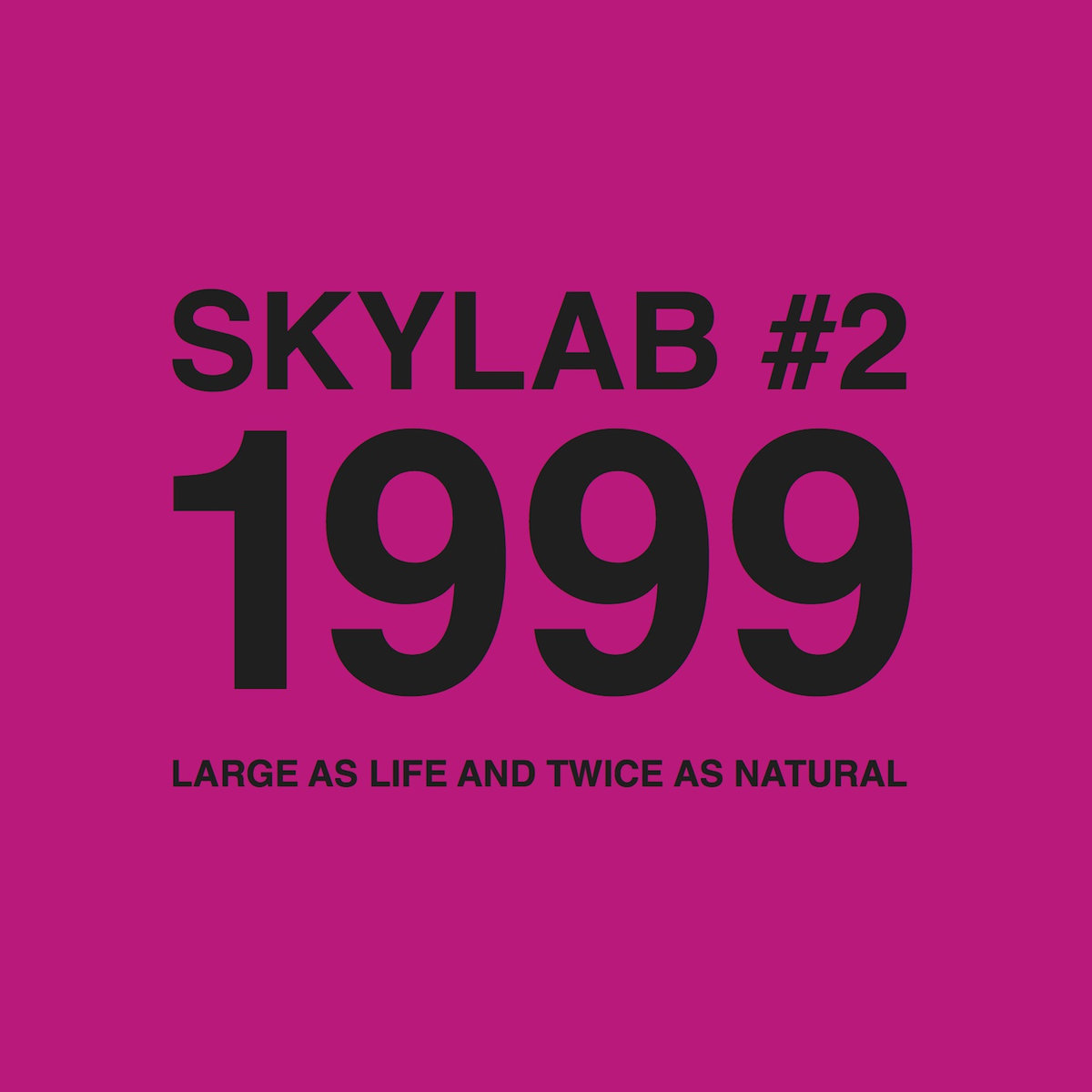
17. Skylab #2: 1999 “Large As Life And Twice As Natural” (Eye Q , 1999)
Skylab was a short-lived collective composed of Matt Ducasse, Howie B and the Japanese duo of Tosh and Kudo, aka Love TKO from Major Force. They released two albums on Sven Vath’s Eye Q label before disappearing, and their work was among the better but lesser-known of the trip-hop era. Ducasse has gone on record to state that their attachment with the genre was unintentional and that he saw their work as “more expansive, […] more in common with collage music […] or soundtracks.” And yet, those ideas were also at the heart of what the best trip-hop could be. In many ways Skylab were not so different to Portishead in both their intentions and execution. Their second album was released just as the label folded, leading it disappear into the cracks of time until a reissue by Tummy Touch earlier this year. Howie B had left by this point, and vocalist Debbie Sanders joined the trio to craft a beautiful record which really goes out there and was praised by both critics and knowledgeable fans.

16. Laika Silver Apples of the Moon (Too Pure, 1994)
Emerging from post-rock band Moonshake, Laika orbited the trip-hop genre without succumbing to many of its less flattering trappings. When guitarist and vocalist Margaret Fiedler commented in 1995 that her band was “just like trip-hop, but much much faster,” she was doing herself a massive disservice. A cursory listen might not even reveal too many obvious similarities – like Portishead, Laika were taking elements of post-rock, krautrock and certainly hip-hop to provide something reactionary, and different from the pervasive, laddish Britpop that was polluting the charts at the time. While their contemporaries Stereolab (and later, Broadcast) were experimenting with drum machines and synthesizers, Laika were integrating samples and a deep passion for jazz and dub. Silver Apples of the Moon is one of the most singular albums on this list, and one of the most rewarding.

15. Nightmares on Wax Smokers Delight (Warp, 1995)
Few records from this era quite capture the nexus of styles that trip-hop could represent at its best than Nightmares On Wax’s second album for Warp. Pulling from the same influences that defined the late 1980s rave explosion, Smokers Delight reconfigured the UK’s summer of love for the Discman generation while remaining just as suited to chill-out room comedowns or Ibiza sunset sessions.

14. REQ One (Skint, 1997)
Sure, Skint might still be best known for breaking Fatboy Slim, but don’t turn away just yet. Brighton-based producer (and sometime graf writer) REQ offered up one of the most blunted takes on the genre, almost by accident. His compositions didn’t pander to the popularity of the growing trip-hop scene, instead dwelling in a noisy, near-ambient back room. He made hip-hop instrumentals that sounded like they were being beamed in from a parallel universe via 14.4kbps modem, and in doing so, avoided being both pigeonholed and, well, popular. His brilliant debut album One has barely dated, fitting as well alongside DJ Spooky or even Dälek as it does anything the Bristol scene had to offer. One sounds, at times, like an MPC tumbling down a distant stairwell into a muddy lake, and we couldn’t think of a better recommendation than that.

13. Crooklyn Dub Consortium Certified Dope Vol.1 (Wordsound, 1995)
Skiz Fernando Jr.’s Wordsound label was in many ways the dubbed-out New York answer to Mo’ Wax, a home for what its founder coined dub-hop: music that blended the dusty boom bap that ruled the city at the time with the mixing desk mysticism of Jamaican dub. Certified Dope Vol.1 was Fernando’s attempt at cataloguing the music of like-minded artists who populated the Greenpoint and Williamsburg neighbourhoods in the early 1990s, including the likes of We™, Dr. Israel and Bill Laswell. Swinging like a pendulum between full-on dub and head-nod instrumentals, the compilation was one of the first to highlight the parallels between hip-hop’s sampling aesthetic and Jamaica’s dub.

12. DJ Krush Meiso (Mo’ Wax / Sony, 1995)
I imagine that choosing a favourite DJ Krush album is a little like asking parents to pick their favourite kid. A perfectionist who infused an American cultural import with the meticulousness of his own culture, the Japanese producer was the Far East’s answer to DJ Shadow, and together they would become Mo’ Wax’s flagship artists. On Meiso he dug for samples and looped them with the same precision, sensitivity and attention to detail as the finest calligrapher or ukiyo-e artist. The addition of CL Smooth, The Roots’ Black Thought and Malik B as well as Big Shug and Guru showed that trip-hop’s instrumental aesthetic could also provide the backdrop for some fine rap moments.

11. David Holmes Let’s Get Killed (Go! Beat, 1997)
For his second album, Belfast’s David Holmes walked around New York on acid recording voices and sounds. The results were weaved into the music for Let’s Get Killed which, like his 1995 debut, acts as a sort of soundtrack for an imaginary movie. The process also resulted in one of the best albums of the era – a psychedelic collage of rhythms, textures and styles that jumps between hip-hop, dub and dance music and rests on the back of Holmes’ urban trip. Let’s Get Killed has aged gracefully and still sounds just as engrossing as it did nearly 20 years ago.

10. DJ Spooky Songs of a Dead Dreamer (Asphodel, 1996)
Say what you like about Spooky and his over-explanation (those liner notes) and academic slant, Songs of a Dead Dreamer might sound better now than it did back in 1996. Hobbled at the time by the “illbient” tag, Spooky had come to the same conclusions as many of his European contemporaries: that a blend of hip-hop rhythms, dub bass and ambient soundscapes sounded pretty damn inspiring. Songs of a Dead Dreamer is his crowning achievement, and while its construction is relatively simple – loops fed through Spooky’s desk and piped through various effects – the effect is hypnotic and beguiling. While others may have pilfered from dub at a surface level, Spooky was using the Jamaican techniques (mixing board trickery, tape delay etc) to produce alien soundscapes that were a million miles from the comparatively safe sounds of Up, Bustle and Out or Funki Porcini.

9. DJ Cam Abstract Manifesto (P-Vine, 1996)
Soon after his debut in 1994, Paris’s DJ Cam positioned himself as the European equivalent to DJ Krush and DJ Shadow – a hip-hop enthusiast capable of weaving together abstract, blunted beats with finesse. Within a few years, he’d parlayed his underground kudos for an attempt at more standard rap fare. Abstract Manifesto is one of his lesser-known releases, a Japan-only album that tapped into the same minimal approach as Krush with added jazz flourishes and junglistic detours. ‘No Competition’ remains one of his best compositions to date, and a staple of sets from the era.

8. Major Force West 93-97 (Mo’ Wax, 1999)
It’s testament to the power of the ideas underpinning trip-hop at the time that this list includes an album spearheaded by a Japanese pop musician who had a hand in the new wave movement. Major Force was the name of Toshio Nakanishi’s hip-hop project, originally conceived in 1988 after a near-decade long infatuation with the music. Comprised of Nakanishi and former Melon bandmates Gota Yashiki and Masayuki Kudo, Major Force released new material as well as an anthology titled The Original Art-Form on Mo’ Wax in the mid-to-late 1990s. The latter is well worth your time, featuring early work and collaborations with Bristol’s DJ Milo, another link in the global thread that supported the music’s most daring leaps. In a 2014 interview, Nakanishi admitted that his fascination with hip-hop stemmed from recognising its links with Burroughs’ cut-ups, stating that “in collage, something happens where you never expected it to.”
93-97 compiles the group’s work during their years living in London, hence the twist to their name. It’s a brilliant and bizarre collection of ideas from a culturally out-of-place trio, who got it because they were so far from the “it” everyone was talking about. In those same years, Nakanishi and Kudo also worked as part of Skylab and you can hear similarities in this collection with the latter’s #1 debut album, especially in how the best of it isn’t the downtempo beats but the drawn-out compositions which have the feel of improvised studio jams. Later on in his interview, Nakanishi points out that London, at the time, felt as psychedelic as the 1960s, with the group seeking to inject some of this spirit into hip-hop, which in England was called trip-hop.

7. Various Artists Headz 2 (Mo’ Wax, 1996)
Just as the first Headz marked Mo’ Wax’s ascendance, the second compilation crowned its achievements and enshrined its best-known artists in an expansive collection of 53 tracks. While the first volume feels a little dated, Headz 2 has aged remarkably well, in part thanks to its broad representation of what trip-hop could be and where it came from. That means music from the Beastie Boys, UNKLE, Money Mark, The Black Dog, Dillinja, DJ Shadow, Danny Breaks, Tortoise and Urban Tribe among many. Headz 2 is also testament to James Lavelle’s impeccable A&R skills, and his talent for making sense of the various 1990s post-rave threads that informed the music.

6. Leila Like Weather (Rephlex, 1998)
Leila Arab’s debut album stuck out like a sore thumb when it appeared on Rephlex in 1998. Not because it was more extreme than Rephlex’s usual fare, but because it was actually a proper album, with songs, a narrative and little of the label’s usual tongue-in-cheek antics. Arab had pieced together a hazy, underwater daydream of a record with half-heard soul, pop and chiming ice cream truck electronics swirling together in a soup of memory and emotion. Not quite trip-hop and not quite illbient, it certainly wasn’t IDM either, despite an intriguing “post production” credit from a certain Richard D. James. It’s one of the most disarming records of the era, and manages to fulfil the promise of trip-hop without succumbing to its trappings. Like Weather might be the one record on this list that has the most in common with Maxinquaye , and that should tell you something about its quality.

5. Luke Vibert Big Soup (Mo’ Wax, 1997)
Luke Vibert’s first record under his real name, Big Soup summed up the Mo’ Wax catalogue perfectly, even if Vibert was only casually adjacent to the scene. Maybe that helped, as his productions have stood the test of time, sitting somewhere in between the sample-rich collages of DJ Shadow and the tight, precise constructions of DJ Krush and Major Force. The thing that Vibert had and which many of his peers always lacked was a sense of humour, and as track titles like ‘No Turn Unstoned’ might suggest, that helped remove some of the inherent pretentiousness of the scene, breaking down another barrier that walled it off to potential listeners. Vibert’s produced more complicated records since, and he’s produced more successful records too, but Big Soup is a perfect picture of a certain moment in time, painted with a British eccentricity that cuts through the posturing that would later derail the scene.

4. Massive Attack Blue Lines (Island, 1991)
In a 1998 feature for The New York Times , Guy Garcia posited Blue Lines as the blueprint for trip-hop, an argument that holds some weight if you consider that parts of the album were as old as the days of The Wild Bunch, from which the trio emerged. Blue Lines made its mark thanks to a mix of ideas: England’s love affair with sound systems; the comedown from its own summer of love in 1989; and hip-hop’s nascent dominance and rapacious aesthetic. Blue Lines was all of these things and more. Whether or not you consider it trip-hop is at this point in time purely a matter of personal beliefs and largely irrelevant considering its legacy. In 2009, Daddy G told The Observer : “What we were trying to do was create dance music for the head, rather than the feet.” A statement of intent for trip-hop if there ever was one.

3. DJ Shadow Endtroducing (Mo’ Wax, 1996)
DJ Shadow’s first album for Mo’ Wax is the kind of debut that places the bar so high in its mastery of a new musical vocabulary that even its creator can never hope to better it, forever living beneath the weight of what he’s accomplished. Endtroducing is the lingua franca of trip-hop, an album crafted by a hip-hop fanatic outside of any direct sphere of influence but his own. Like all of the releases on this list, to define Endtroducing as trip-hop is to limit it, to take away the transformative powers it had to imbue listeners with a new understanding of the potentials of hip-hop as an instrumental music. It’s not just the music that made hip-hop suck in 1996, it was also the critics who couldn’t conceive that albums like Endtroducing were what they claimed to be and nothing more.

2. Portishead Dummy (Go! Beat, 1994)
Portishead’s 1994 debut was soaked in the same DIY, melting pot approach that typified much of Bristol’s output at the time. From Massive Attack to Smith & Mighty and early Full Cycle releases, the city’s greatest hits in that decade were all about the blending of aesthetics with a brazen irreverence for rules. As a result the music felt both impossible and irresistible. Two decades on, Dummy still sounds as hypnotic and engrossing as it did then, a gritty take on hip-hop, 1960s movie soundtracks and traditional songwriting that laid bare the potentials afforded by sidestepping rigid genre formats.

1. Tricky Maxinquaye (Island, 1995)
This is the one, really. Tricky named his debut solo album after his mother, Maxine Quaye, and that should already indicate just how personal the record is. He’d sharpened his skills as a member of Massive Attack (indeed some of his rhymes from Blue Lines were recycled here), but his solo material went far beyond his former collaborators’ scope. Tricky was pulling from a darker well, and allowed his struggles, both external and internal, to sit at the album’s epicentre. The result was some of the most tortured and original electronic music cut to wax which gave birth to an era where “weird” became fashionable.
He was assisted by his then-girlfriend Martina Topley-Bird, whose nonchalant purrs offered a foil for Tricky’s hoarse raps. She was the smooth to Tricky’s tab-addled rough, and grounded the project for many listeners, no doubt helping people to lump it in with the similarly located Portishead.
Tricky hated being labeled trip-hop (“This is not a coffee table album. I don’t think you can have dinner parties to it,” he stated in 1996) and has rallied against it ever since, but there can be no argument that, for better or for worse, he left an indelible mark on British music, electronic and otherwise. If covering Public Enemy’s racially charged ‘Black Steel in the Hour of Chaos’ and recasting Chuck D as a mixed-race female from Bristol (singing, instead of rapping) isn’t hitting the genre’s conceit squarely in the face, we’re not sure what is. “If I supposedly invented it, why not call it Tricky-hop?” he said, before releasing Pre-Millenium Tension . He wasn’t wrong.
More from Featured Top

Interview: Freeka Tet
Friday, April 19

Interview: Lyra Pramuk
Friday, April 5

Interview: 404.zero
Friday, March 29

Feature: object blue
Friday, March 22

Interview: Martine Syms
Friday, March 15

Interview: Rabit
Friday, March 8

Interview: Ivan Michael Blackstock
Friday, February 23

Interview: VTSS & Actual Objects
Friday, February 16

Interview: Theo Triantafyllidis
Monday, February 12

United Visual Artists: Synchronicity
Wednesday, February 7
More from Featured Stories

The Vinyl Factory celebrates art and sound with immersive exhibition at 180 Studios
Thursday, April 11
9 years ago
2 months ago
3 months ago
4 months ago
5 months ago
6 months ago
9 months ago
11 months ago
12 months ago
2 years ago
Academia.edu no longer supports Internet Explorer.
To browse Academia.edu and the wider internet faster and more securely, please take a few seconds to upgrade your browser .
Enter the email address you signed up with and we'll email you a reset link.
- We're Hiring!
- Help Center

Tracing the Roots of Trip Hop: How One City’s History Influenced a Global Genre
Trip Hop exploded onto the popular music scene in the early 1990s, its unique blend of hip hop, reggae, funk and soul conquering the airwaves of England before attaining worldwide popularity. Before becoming a global phenomenon trip hop was born and developed in the underground music scene of Bristol, England, crafted by artists such as Smith and Mighty, Massive Attack, Portishead and Tricky, and the city itself has played a part in shaping the music it produces. Two seminal events in Bristol’s history have helped to define trip hop music, contributing to its development in three important areas. Bristol was a leading port in the international slave trade and the city has an equivocal relationship with its own history, a city with a proud sense of its own identity that also struggles with its nefarious heritage. This cultural uneasiness nurtures a dark undercurrent that is outputted through the city’s music and art, creating a melancholy sound that reflects the locality’s discomfort. Bristol also experienced mass waves of post-war migration from the Caribbean, an event that impacted the future of the city’s music in two distinct ways. The black and Caribbean populations, established during the trading years, grew exponentially in number and migrants from Jamaica brought reggae music with them where it was disseminated into the wider community. These communities also provided a point of access for the invasion of American hip hop in the 1980s, which, together with reggae, would play an integral part in developing the Bristol sound. Many children born to black and island migrants were forced to deal with issues of identity, what it meant to be black and British. This struggle has been played out in the creation of trip hop music as artists attempt to pay homage to the American originators while still developing their own brand of British hip hop music that speaks to their own cultural identity.
Related Papers
Trip hop music emerged in the early 1990s, however, as a label the term ‘trip hop’ has always been problematic. Portishead, Massive Attack and Tricky, the artists frequently credited with creating trip hop, have unanimously rejected the label, claiming their music has nothing to do with trip hop. Despite the artists’ objections, music industrialists, fans and academics continually label their music trip hop or its alternate term ‘Bristol sound’, though specifics are never given as to what, if anything, distinguishes the two terms. This article seeks to mediate the discussion between opposing viewpoints by describing the Bristol sound as a style that relates to the trip hop genre. Following the introduction, the second section discusses the controversy surrounding the term ‘trip hop’ and suggests possible reasons behind the artists’ rejection of the label. The third section addresses the terms ‘genre’ and ‘style’ and outlines their similar points of reference while also highlighting their different areas of inquiry. The final section analyses several trip hop songs and identifies common elements that relate to the trip hop genre, before identifying explicit differences that distinguish the Bristol sound style. The analysis of style focuses on the spectral quality of the works and draws from Smalley’s (1997) theory of spectromorphology.
Alex Stevenson
The emergence of localised sub-genres of hip hop around the world has been well documented (Bennett, 1999; Mitchell, 2001), however the genre of UK Hip Hop (or British Hip Hop) has been largely overlooked in scholarly research. Although largely an underground music scene with very limited commercial success, UK hip hop has been recognized as being pivotal in the development of the more commercially successful genres of grime, trip hop and drum’n’bass (Hesmondhalgh & Melville, 2001; Campion, 2006). Existing research into UK hip hop has often been from a cultural or sociological, rather than musicological perspective (Hesmondhalgh & Melville, 2001; Webb, 2007; Bennett, 1999; Dedman, 2011). Using semi-structured interviews with key UK hip-hop producers alongside analysis of published interviews from selected hip-hop media publications alongside analyses and discussion of examples of the producer’s musical works to support the interview data, the aim of this paper is to examine the impact of the amalgamation of British and hip-hop musical aesthetics and its impact on the development of UK hip-hop production practice during what is widely considered its most prolific period between 1998 and 2005 (Speers, 2014). References Bennett, A. (1999) Rappin’ on the Tyne: White Hip Hop Culture in Northeast England – an Ethnographic Study. The Sociological Review, 47 (1), pp.1–24. Campion, C. (2006) Inside grime. The Guardian. Available from: <http://www.guardian.co.uk/music/2004/may/23/urban1> [Accessed 14 November 2012]. Dedman, T. (2011) Agency in UK hip-hop and grime youth subcultures - peripherals and purists. Journal of Youth Studies, 14 (5), pp.507–522. Hesmondhalgh, D. & Melville, C. (2001) Urban Breakbeat Culture - Repercussions of Hip-Hop in the United Kingdom. In: T. Mitchell ed. Global Noise: Rap and Hip Hop outside the USA. Wesleyan University Press. Mitchell, T. ed. (2001) Global Noise: Rap and Hip Hop outside the USA. Wesleyan University Press. Speers, L. (2014) Keepin’ It Real: Negotiating Authenticity in the London Hip Hop Scene. PhD Thesis. London, Kings College London. Webb, P. (2007) Hip hop’s musicians and audiences in the local musical ‘milieu’. In: P. Hodkinson & W. Deicke eds. Youth Cultures: Scenes, Subcultures and Tribes. Oxon, Routledge.
Journal of Language, Identity & Education
Alastair Pennycook
هدى مزيودات Huda Mzioudet
Born out of the second Black cultural renaissance of Britain in the 1980s (the first having occurred in the 1960s and early 1970s, with the work of the artists and writers of the Caribbean Artists Movement, such as George Lamming and Aubrey Williams, and the emergence of an extensive network of Black performance poetry (such as Linton K. Johnson), hip-hop could be seen as a British Black form of expressive movement in Black Britain in the 1990s. The performance poets’ movement could be considered as a precursor to the international explosion of rap and ragga in the late 1980s and early 1990s, as with the poems of Amiri Baraka in the 1960s, who was one of the pioneers of the Black bohemian movement. The institutionalisation of the Notting Hill Carnival in West London as Europe’s biggest street event, the explosion of sound systems in south London clubs in the 1960s and 1970s and later that of reggae in major Black areas in Britain and the Brixton riots in the 1980s, were all instrumental in the development of hip-hop in Britain. The 1990s Black Britain witnessed the normalisation of race in mainstream popular culture and the growth of the Black intelligentsia, the result of the Thatcherite enterprise culture of the 1980s, which further helped the access of hip-hop culture in mainstream British culture.
Ethan Pearce
Abdelwahab Drofix
Research and Science Today
Eduard Dumitru
Holger Droessler
RELATED PAPERS
Laxmi Parida
Proceedings of the 17th International Conference on the Physics of Semiconductors
Don Wolford
Wilser Alvites
EAD em FOCO
Daniel Apolinário
The Journal of Arthroplasty
Alejo Sison
Belén Monclús
Marine Structures
Karan Doshi
Contemporary Economics
Anna Szelągowska
Eldar Shahgaldiyev
Muhammad Omar
Annales d'Économie et de Statistique
Shmuel Zamir
Personality and Individual Differences
Carolijn Ouwehand
Dementia (London, England)
Simon Burrow
FEBS Letters
International Journal of Molecular Sciences
Marcelo Dias Baruffi
Bulletin of the American Schools of Oriental Research
Yifat Thareani
Fisheries Research
tomohiro deguchi
Proceedings of the Seventh Symposium on Usable Privacy and Security
Giovanni LEON
Scott Stafne
International Journal of Computer Games Technology
Atanas Georgiev
Actas Dermo-Sifiliográficas
Isabel Colmenero
Acta Romanica Quinqueecclesiensiis IV.
Adrián Bene
买卧龙岗大学毕业证书成绩单 办理澳洲UOW文凭学位证书
RELATED TOPICS
- We're Hiring!
- Help Center
- Find new research papers in:
- Health Sciences
- Earth Sciences
- Cognitive Science
- Mathematics
- Computer Science
- Academia ©2024
Philip Chryssikos 1am - 6am
Now Playing
Jolene Dolly Parton Download 'Jolene' on iTunes
The 10 greatest trip-hop bands of all time
22 February 2023, 11:52

By Tom Eames

Trip-hop emerged in the 1990s as a leading force of downtempo electronic music.
Originating largely in Bristol in the early 1990s, trip-hop has been described as a psychedelic mix of hip-hop and electronica, with slower tempos and an atmospheric style. It also uses elements of jazz, soul, funk, reggae, R&B, and other genres, as well as often sampling film soundtracks and other sources.
Trip-hop was first coined by Mixmag , and it soon had commercial success by the second half of the decade.
From its pioneers of the '90s to the artists they influenced, here are the greatest trip-hop artists:

Morcheeba - Blindfold (Official Video)
Formed in the mid-1990s with singer Skye Edwards and brothers Paul and Ross Godfrey, Morcheeba emerged with sublime influences of rock, folk and downtempo, becoming a leading force in the trip-hop movement, starting with 1996's Who Can You Trust?
They have released 10 studio albums since 1995, with the latest being 2021's Blackest Blue .
Although they have moved on to other genres since their early trip-hop days, they still must be counted as one of the genre's greatest acts.
Sneaker Pimps

Sneaker Pimps - 6 Underground (Official Music Video)
Formed in Hartlepool in 1994, Sneaker Pimps' debut album, Becoming X was a seminal trip-hop LP in 1996.
Best known for the single '6 Underground', the band takes its name from an article the Beastie Boys published in their Grand Royal magazine about a man they hired to track down classic sneakers.
The band was created by electronic musician Liam Howe and guitarist Chris Corner, and then later recruited singer Kelli Ali (then known as Kelli Dayton).
After a long hiatus, the group returned with Howe and Corner in 2016, and they finally started releasing new music in 2021.
Little Dragon

Little Dragon - Twice
Swedish band Little Dragon hail from Gothenburg, having formed in 1996.
The band currently consists of singer Yukimi Nagano, Erik Bodin (drums), Fredrik Wallin (bass) and Håkan Wirenstrand (keyboards).
Their first release was the incredible single 'Twice' in 2006, and they brought out their debut album a year later.
Nagano was in her first year in high school when she met seniors Wallin and Bodin. The three of them would meet up after school to jam and play records, and their band name was inspired by the 'Little Dragon' nickname Nagano earned due to the "fuming tantrums" she used to throw while in the studio.

UNKLE - Rabbit In Your Headlights
UNKLE was founded in 1992 by James Lavelle.
In 1997, Lavelle brought in DJ Shadow to work on his debut album, which was released a year later. The album featured collaborations with the likes of Thom Yorke (Radiohead), Mark Hollis (Talk Talk), Mike D (Beastie Boys), Badly Drawn Boy and Richard Ashcroft (The Verve).
UNKLE as an outfit still exists today, though Lavelle has featured various incarnations of the collective, hiring a wide range of guest musicians and producers along the way.
His most recent studio album release with 2017's The Road: Part 1.
Martina Topley-Bird

Sandpaper Kisses
English singer and multi-instrumentalist Martina Topley-Bird first found fame when she featured on Tricky's debut album, Maxinquaye in 1995.
She also worked with him on his subsequent albums Nearly God and Pre-Millennium Tension, and then in 2003, she released her debut solo album Quixotic. The album was a critical hit and earned her a Mercury Prize nomination.
She has since worked with the likes of Gorillaz, Diplo and Massive Attack among others, and her track 'Sandpaper Kisses' has been covered Stephen Marley and sampled by The Weeknd.

Lamb - Gorecki
Electronic music duo Lamb formed in 1996 in Manchester, and consist of producer Andy Barlow and singer-songwriter Lou Rhodes. Rhodes' distinctive vocals gave them a uniquely beautiful sound, and no doubt inspired the likes of The Knife and Goldfrapp.
Their brand of trip-hop is also influenced drum and bass and jazz, and are best known for their singles 'Górecki' and 'Gabriel'.
Despite a hiatus in the 2000s, they have continued to release music, with their most recent being 2019's The Secret of Letting Go .

DJ Shadow - Midnight In A Perfect World
Speaking of DJ Shadow...
Joshua Davis is an American DJ, songwriter and record producer, known for his famous alter ego. His debut studio album, Endtroducing..... was released in 1996.
DJ Shadow's music often involves manipulating samples, bringing in rare pieces of music and sound clips, from all kinds of genres, particularly on his early albums.
His most recent LP was the double album Our Pathetic Age in 2021.

Portishead - Glory Box
Portishead - named after the place in Somerset, formed in 1991 in Bristol. Comprising of singer Beth Gibbons, producer Geoff Barrow, and musician Adrian Utley, engineer Dave McDonald is also sometimes credited as the fourth member.
- The Story of... 'Glory Box' by Portishead
Their 1994 album Dummy brought together hip-hop production with emotive vocals from Gibbons, creating a particularly atmospheric and cinematic sound. It was one of the albums that defined trip-hop as a growing genre.
Portishead themselves have disliked being associated with the genre, and would later move away from the sound on later albums.

Tricky - 'Black Steel' (Official Video)
British artist Tricky was raised in Bristol, and began his career as an early member of Massive Attack.
He soon began a solo career with his debut album, Maxinquaye , in 1995. It instantly won him huge critical acclaim, and he released four more studio albums before the end of the decade. His most recent album was 2020's Fall to Pieces .
Tricky is considered a pioneer of trip-hop, with his style known for being often dark in tone, and blending cultural influences and genres, such as hip-hop, rock and reggae.
Massive Attack

Massive Attack - Unfinished Sympathy
Trip-hop pioneers Massive Attack formed in 1988 in Bristol, led by Robert '3D' Del Naja, Adrian 'Tricky' Thaws, Andrew 'Mushroom' Vowles and Grant 'Daddy G' Marshall.
Their debut album Blue Lines was released in 1991, with the single 'Unfinished Sympathy' considered one of the greatest songs of all time, let alone trip-hop.
1998's Mezzanine - containing the classic track 'Teardrop') and 2003's 100th Window were also UK number ones.
They have won various awards of the years, and have sold over 13 million copies worldwide.
Like Portishead, they have never been a massive fan of the 'trip hop' label. Daddy G said in 2006: "We used to hate that terminology [trip-hop] so bad. You know, as far we were concerned, Massive Attack music was unique, so to put it in a box was to pigeonhole it and to say, 'Right, we know where you guys are coming from."
Latest Chill News and Features
See more Latest Chill News and Features
Smooth Chill presents new show Chillout Classics featuring iconic tracks
Portishead's beth gibbons unveils new solo single 'reaching out' ahead of debut album release, london grammar announce new album the greatest love led by new single 'house', moby announces special one-off uk show to celebrate 25th anniversary of play, nils frahm to headline first jazz cafe festival in london this september, listen to smooth chill, smooth playlists, smooth's all time top 500, smooth soul, smooth country hot hits, smooth chill concentration, smooth podcast picks, they don't teach this at school with myleene klass, take that: this life, runpod with jenni falconer, the news agents.
- The Most Famous Rapper in the World Right Now
- Who Puts on the Best Live Show?
- Diss Tracks That Disrespected
- British Rappers
- Best Rappers of the 2000s
- New York Rappers
- Southern Rappers
- Florida Rappers
- The Greatest Rappers of the Decade
- Underground
- New School Rappers
- All-Time Greatest
- Top Producers Who Also Rap
- Lyrical Geniuses
- Worst of All Time
- Hardcore Rappers
- Best Hip Hop Albums Ever
- '90s Rappers
- Muslim Rappers
- '90s Women
- Emo Rappers
- Rappers with the Most Respect
- White Rappers
- Asian Rappers
- SoundCloud Rappers
- Country Rappers
- The Very Best Rap Movies
- Bronx Rappers
- '80s Rappers
- Compton Rappers
- All the XXL Freshman Classes, Ranked
- Canadian Rappers
- Atlanta Rappers
- Funniest Rappers
- Female Rappers
- Chicago Rappers
- Hip Hop Voices You Wish You Had
- Detroit Rappers
- Houston Rappers
- Alabama Rappers
- Conscious Rappers
- Battle Rappers
- Gangsta Rappers
- Freestyle Rappers
- Rappers Who Are Already Gone
- Young and New School Rappers
- Hottest Producers Right Now
- Latin Rappers
- New Orleans Rappers
- History's Greatest Rap Duos, Ranked
- Miami Rappers
- The Best Rappers of 2023
- Jamaican Rappers
- The Best New Rappers of 2023
- Los Angeles Rappers
- The Best New Rappers of 2022
- Memphis Rappers
- Philadelphia Rappers
- Long Beach Rappers
- Must-Hear 2022 Rap Songs
- The Very Best Rappers of 2022
- Surprisingly Great Singers
- French Rappers
- Mexican Rappers
- The Best Hip-Hop Supergroups of All Time
- Texas Rappers
The 40+ Best Trip Hop Artists, Ranked
If you are ready for a journey through one of the most eclectic music forms, consider trip hop. Trip hop music awakens the senses and unlocks a treasure trove of rhythm, style and emotion. This genre is steeped in the roots of British electronica, breakbeat, and hip hop. It's fascinating to wend your way through a collection of the finest trip hop artists whose songs have made a profound impact on music scenes globally.
The best trip hop groupspaint an enchanting picture of profound musical innovation, blending various styles to create something unique and potent. Their transformative influence on trip hop's evolution becomes apparent with each resonating beat and soulful lyric. The music vibrates with a deep resonance that echoes across the mainstream and indie audiences, highlighting the uniqueness of each artist and their indelible mark on the genre.
In the illustrious lineup of trip hop artists, certain names stand out. These include top trip hop bands like Portishead , Massive Attack, and Tricky. Portishead's hauntingly beautiful melodies tug at the heartstrings of the listeners, making the band famous. Massive Attack, with their groundbreaking albums, brought a new perspective to the genre, a testament to their status among the best trip hop artists. Tricky melded raw emotion with creative beats resulting in a distinctive sound that resonates with fans to this day. Their achievements, ranging from memorable songs and classic albums to prestigious awards, speak volumes about their stature in the trip hop universe.
Reflecting on the history of trip hop music and its best artists presents a captivating saga of artistic expression, innovation, and boundary-pushing beats. Distinguished by their individual style and contributions, these trip hop bands have set new standards for the genre with magical tunes that continue to inspire, entertain, and move audiences around the world.
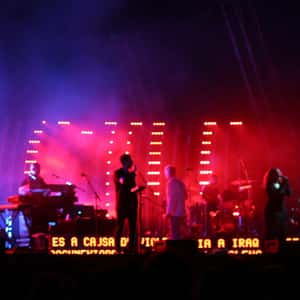
Massive Attack
Massive Attack, hailing from Bristol, England, have long been considered pioneers in the realm of trip hop. The trio, consisting of Robert Del Naja, Grant Marshall, and Andy Vowles, crafted a unique sound that seamlessly merged elements of dub, reggae, soul, and electronica. Their seminal album Blue Lines served as a blueprint for trip hop, boasting an array of downtempo beats, ethereal ambience, and thought-provoking lyricism. Massive Attack's innovation and experimentation within the genre have solidified their legacy as one of the most influential trip hop acts of all time.
Rock Out To Some Of The Most Popular Songs From Massive Attack - "Teardrop" - "Unfinished Sympathy" - "Angel"
Dive Into Massive Attack's History With Some Unique Deep Cuts - "Karmacoma" - "Black Milk"
- Dig Deeper... The Best Bands Like Linkin Park
- And Deeper... The Best Bands Like Massive Attack
- # 968 of 1,151 on The Greatest Musical Artists of All Time
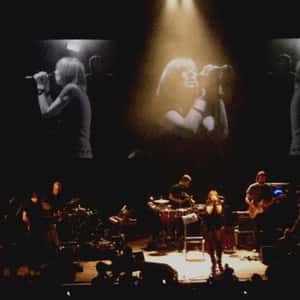
Portishead, the brainchild of Geoff Barrow, Beth Gibbons, and Adrian Utley, revolutionized trip hop in the 90s with their groundbreaking albums Dummy and Portishead . With a hauntingly atmospheric sound that flawlessly combined eerie vocal melodies, innovative sampling techniques, and cinematic soundscapes, Portishead captured the imagination of music lovers everywhere. They managed to push the boundaries of the genre by blending elements of jazz, electronica, and rock, ultimately creating a hypnotic experience that became synonymous with the trip hop movement. To this day, Portishead remains a luminary of the scene, continuously inspiring generations of artists with their emotive and timeless compositions.
Rock Out To Some Of The Most Popular Songs From Portishead - "Glory Box" - "Sour Times" - "Roads"
Dive Into Portishead's History With Some Unique Deep Cuts - "It's a Fire" - "Over"
- # 40 of 69 on The Best Musical Trios Of All-Time
- # 997 of 1,151 on The Greatest Musical Artists of All Time
- # 684 of 864 on The 250+ Greatest Rock Bands Of All Time, Ranked
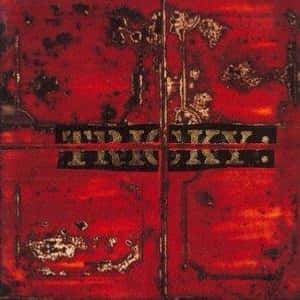
UK-based artist Tricky, born Adrian Thaws, quickly emerged as a trip hop icon with the release of his debut album, Maxinquaye . His distinct fusion of hip hop, rock, and electronica resonated with listeners seeking something more subversive and experimental within the genre. Drawing heavily on his Jamaican roots and experiences growing up in Bristol, Tricky's music showcased his powerful storytelling abilities and otherworldly production skills. As a result, Tricky has remained an essential figure within the trip hop scene, continuously pushing the envelope with each successive release.
Rock Out To Some Of The Most Popular Songs From Tricky - "Hell is Round the Corner" - "Black Steel" - "Ponderosa"
Dive Into Tricky's History With Some Unique Deep Cuts - "Vent" - "Christiansands"
- # 286 of 308 on The Greatest Musical Artists of the '90s
- # 8 of 43 on The Best Bands Like Massive Attack
- # 39 of 91 on The Best Electronic Bands & Artists
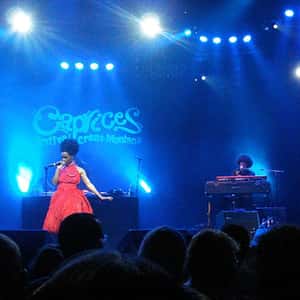
Morcheeba, a British trio consisting of siblings Paul and Ross Godfrey and vocalist Skye Edwards, captivated listeners with their polished blend of trip hop, electronica, and pop. Their debut album Who Can You Trust? served as a prime example of their ability to create moody, atmospheric compositions that showcased Edwards' sultry vocal stylings. Morcheeba's ability to navigate the diverse sonic landscape of trip hop while maintaining a strong focus on melody earned them critical acclaim and a devout following. Over time, the band has continued to evolve, solidifying their status as a versatile powerhouse within the genre.
Rock Out To Some Of The Most Popular Songs From Morcheeba - "The Sea" - "Trigger Hippie" - "Rome Wasn't Built in a Day"
Dive Into Morcheeba's History With Some Unique Deep Cuts - "Friction" - "Big Calm"
- # 9 of 43 on The Best Bands Like Massive Attack
- # 58 of 91 on The Best Electronic Bands & Artists
- # 10 of 48 on The Best Downtempo Bands/Artists
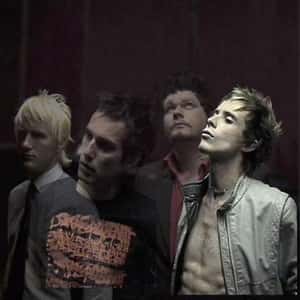
Sneaker Pimps
Established in the mid-90s, the British trip hop trio Sneaker Pimps, composed of Chris Corner, Liam Howe, and Kelli Ali, brought a unique spin to the genre with their compelling mix of electronica, alternative rock, and darkly melodic pop. Their debut album Becoming X showcased innovative production techniques, catchy hooks, and Ali's alluring vocals, which quickly garnered them international attention. Not content to remain static, Sneaker Pimps continued to explore and push the boundaries of trip hop, consistently reinventing their sound and remaining an influential force within the scene.
Rock Out To Some Of The Most Popular Songs From Sneaker Pimps - "6 Underground" - "Spin Spin Sugar" - "Tesko Suicide"
Dive Into Sneaker Pimps' History With Some Unique Deep Cuts - "Low Place Like Home" - "Grazes"

British duo Zero 7, comprised of Henry Binns and Sam Hardaker, emerged on the trip hop scene in the late '90s with a mission to blend chilled-out electronica, sophisticated pop sensibilities, and seductive downtempo grooves. Their debut album Simple Things , featuring collaborations with vocalists like Sia and Mozez, showcased the duo's penchant for crafting exquisitely lush and soothing soundscapes. Over the years, Zero 7 has continued to evolve and redefine their sound, often incorporating elements of jazz, soul, and world music, earning them a dedicated fanbase and a lasting impact on the trip hop genre.
Rock Out To Some Of The Most Popular Songs From Zero 7 - "Destiny" - "In the Waiting Line" - "Home"
Dive Into Zero 7's History With Some Unique Deep Cuts - "Likufanele" - "I Have Seen"
- # 19 of 43 on The Best Bands Like Massive Attack
- # 4 of 66 on The Best Bands & Artists That Start With Z
- # 123 of 349 on The Best Electronica Artists

Hooverphonic
Belgian outfit Hooverphonic, led by mastermind Alex Callier, made a lasting impact on the trip-hop scene with their evocative, cinematic soundscapes that beautifully melded elements of pop, rock, and electronic music. From their breathtaking debut A New Stereophonic Sound Spectacular to their more recent work, Hooverphonic has demonstrated an uncanny ability to create lush, immersive atmospheres with a keen sense of melody. With a revolving door of talented vocalists, including Liesje Sadonius, Geike Arnaert, and Luka Cruysberghs, the band has consistently defied expectations, solidifying their status as one of trip hop's most captivating acts.
Rock Out To Some Of The Most Popular Songs From Hooverphonic - "Mad About You" - "2Wicky" - "Eden"
Dive Into Hooverphonic's History With Some Unique Deep Cuts - "Vinegar & Salt" - "Out of Sight"
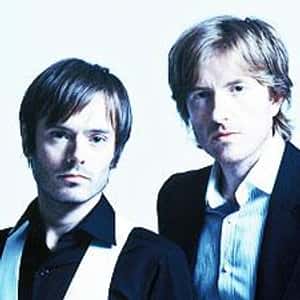
French duo Nicolas Godin and Jean-Benoît Dunckel, better known as Air, brought a distinctly Gallic flair to the world of trip hop with their sublime fusion of electronic experimentation, retro-pop melodies, and dreamy atmospherics. Their seminal album Moon Safari , featuring hit singles like "Sexy Boy" and "Kelly Watch the Stars," captivated audiences with its timeless charm and ethereal beauty. Throughout their career, Air has consistently pushed the boundaries of trip hop by exploring a wide range of sonic palettes and textures, leaving an indelible mark on the genre.
Rock Out To Some Of The Most Popular Songs From Air - "Sexy Boy" - "La Femme d'Argent" - "Cherry Blossom Girl"
Dive Into Air's History With Some Unique Deep Cuts - "Le Soleil est près de Moi" - "Talisman"
- # 297 of 308 on The Greatest Musical Artists of the '90s
- # 12 of 43 on The Best Bands Like Massive Attack
- # 135 of 215 on The 200+ Best Indie Artists Of All Time, Ranked
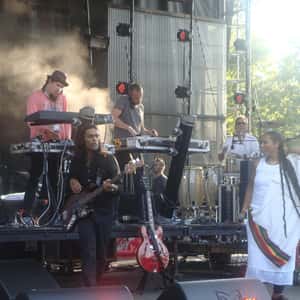
Thievery Corporation
Washington, D.C.-based duo Thievery Corporation, consisting of Eric Hilton and Rob Garza, have been synonymous with trip hop since their formation in the mid-'90s. With a sound that effortlessly fuses elements of dub, reggae, lounge, and electronica, the pair has developed a unique global sonic identity that transcends genre boundaries. Their debut album Sounds from the Thievery Hi-Fi laid the groundwork for their signature sound, combining lush electronic soundscapes with hypnotic grooves and worldly influences. Over the years, Thievery Corporation has continuously evolved their eclectic sound, solidifying their status as one of trip hop's most innovative and boundary-pushing acts.
Rock Out To Some Of The Most Popular Songs From Thievery Corporation - "Lebanese Blonde" - "Sweet Tides" - "The Richest Man in Babylon"
Dive Into Thievery Corporation's History With Some Unique Deep Cuts - "Amerimacka" - "The Mirror Conspiracy"
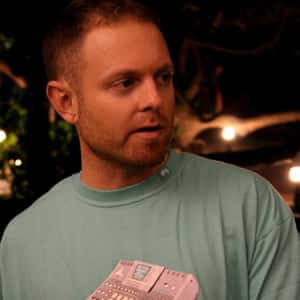
Josh Davis, known professionally as DJ Shadow, is an American producer and DJ who has left an indelible mark on the world of trip hop with his undeniable talent for crafting immersive beats and moody soundscapes. His groundbreaking 1996 debut Endtroducing... is widely regarded as a trip hop classic, showcasing a mastery of sampling techniques, innovative production styles, and a keen ear for haunting, atmospheric sounds. Throughout his career, DJ Shadow has continued to explore and expand the boundaries of the genre, pushing the limits of what can be achieved through the art of sampling and beat making.
Rock Out To Some Of The Most Popular Songs From DJ Shadow - "Midnight in a Perfect World" - "Building Steam with a Grain of Salt" - "Six Days"
Dive Into DJ Shadow's History With Some Unique Deep Cuts - "Stem / Long Stem" - "Organ Donor"
- # 97 of 157 on The Best DJs in the World Right Now
- # 51 of 81 on The 80+ Best Rap Producers Of All Time, Ranked
- # 10 of 43 on The Best Bands Like Massive Attack
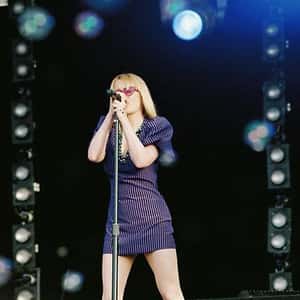
British duo Goldfrapp, led by the bewitching Alison Goldfrapp and multi-instrumentalist Will Gregory, emerged in the early 2000s as a force to be reckoned with in the realm of trip hop. Their debut album Felt Mountain showcased a beguiling mix of cinematic orchestration, electronic experimentation, and Alison's enchanting vocals. Goldfrapp's enigmatic sound has continually evolved, encompassing elements of glam rock, synth-pop, and dance music, making them one of the most unpredictable and fascinating acts within the trip hop genre.
Rock Out To Some Of The Most Popular Songs From Goldfrapp - "Ooh La La" - "Strict Machine" - "Lovely Head"
Dive Into Goldfrapp's History With Some Unique Deep Cuts - "Utopia" - "Black Cherry"
- # 176 of 248 on The Most Hipster Bands
- # 113 of 157 on The Best DJs in the World Right Now
- # 36 of 42 on The Best Gold Things
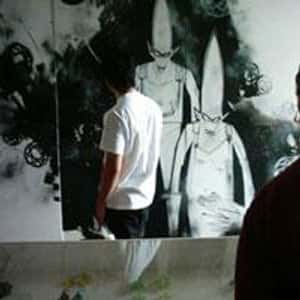
British musical mastermind James Lavelle, the driving force behind Unkle, has been captivating audiences with his dark and cinematic take on trip hop since the late '90s. Unkle's debut album Psyence Fiction , featuring collaborations with notable artists like Thom Yorke and Richard Ashcroft, showcased Lavelle's knack for blending moody electronic production with elements of rock, pop, and hip-hop. Over the years, Unkle's ever-evolving sound and roster of talented collaborators have helped cement the project's place in trip hop history as a daring, innovative force within the genre.
Rock Out To Some Of The Most Popular Songs From Unkle - "Rabbit in Your Headlights" - "Bloodstain" - "Burn My Shadow"
Dive Into Unkle's History With Some Unique Deep Cuts - "Celestial Annihilation" - "Lonely Soul"
- # 7 of 43 on The Best Bands Like Massive Attack
- # 25 of 87 on The Best Bands & Artists That Start With U
- # 39 of 76 on The Best Synth Rock Bands/Artists

Lamb, the enchanting English duo consisting of producer Andy Barlow and vocalist Lou Rhodes, first made waves in the trip hop scene with their eponymous 1996 debut album. Their unique fusion of electronic experimentation, emotive vocals, and captivating songwriting quickly set them apart, winning them fans across the globe. With a sound that combines elements of jazz, drum and bass, and ambient music, Lamb has continually pushed the envelope, proving themselves to be one of the trip hop genre's most enduring and captivating acts.
Rock Out To Some Of The Most Popular Songs From Lamb - "Gorecki" - "Lusty" - "Angelica"
Dive Into Lamb's History With Some Unique Deep Cuts - "Cotton Wool" - "Trans Fatty Acid"

Nightmares on Wax
George Evelyn, the man behind Nightmares on Wax, has been weaving spellbinding webs of sound since the early '90s, blending elements of dub, electronica, and soul to create uniquely evocative trip hop compositions. With a discography that spans decades, Nightmares on Wax has earned a reputation for consistently crafting music that not only embodies the spirit of trip hop but also pushes the boundaries of the genre. From early classics like Smokers Delight to more recent releases like Shape the Future , Nightmares on Wax has proven time and again that his innovative approach to music-making remains vital and engaging.
Rock Out To Some Of The Most Popular Songs From Nightmares on Wax - "You Wish" - "Les Nuits" - "Flip Ya Lid"
Dive Into Nightmares on Wax' History With Some Unique Deep Cuts - "Ethnic Majority" - "Morse"
- # 84 of 146 on The Most Influential DJs of All Time
- # 16 of 43 on The Best Bands Like Massive Attack
- # 17 of 48 on The Best Downtempo Bands/Artists

Norwegian duo Röyksopp, comprising Svein Berge and Torbjørn Brundtland, emerged in the early 2000s with a distinct brand of trip hop infused with elements of synth-pop, ambient, and electronica. Their chart-topping debut, Melody A.M. , showcased their ability to create lush, atmospheric soundscapes punctuated by catchy hooks and intricate production. Throughout their career, Röyksopp has remained committed to exploring the boundaries of trip hop, collaborating with various artists and incorporating diverse influences into their constantly evolving sound.
Rock Out To Some Of The Most Popular Songs From Röyksopp - "Eple" - "Poor Leno" - "Happy Up Here"
Dive Into Röyksopp's History With Some Unique Deep Cuts - "So Easy" - "A Higher Place"
- # 107 of 157 on The Best DJs in the World Right Now
- # 15 of 51 on The Best EDM Duos Of All Time
- # 5 of 43 on The Best Bands Like Massive Attack
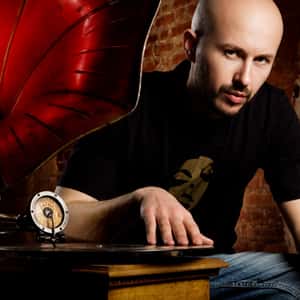
French producer Jean-Christophe Le Saoût, known by his stage name Wax Tailor, has been crafting elegant, cinematic trip hop since the early 2000s. With a penchant for lush orchestration, deft sampling, and moody atmospherics, Wax Tailor's music stands as a testament to the genre's enduring appeal and versatility. Throughout his career, he has collaborated with a diverse array of artists, pushing the boundaries of trip hop while remaining true to the genre's core aesthetic.
Rock Out To Some Of The Most Popular Songs From Wax Tailor - "Que Sera" - "Seize the Day" - "Ungodly Fruit"
Dive Into Wax Tailor's History With Some Unique Deep Cuts - "Positively Inclined" - "Until Heaven Stops the Rain"
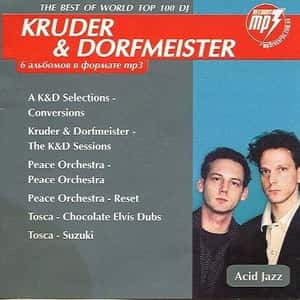
Kruder & Dorfmeister
Austrian duo Kruder & Dorfmeister, composed of Peter Kruder and Richard Dorfmeister, have been at the forefront of the trip hop movement for decades, known for their innovative remix work and original productions. Their landmark compilation The K&D Sessions featured reimaginings of tracks from a wide range of artists, showcasing their ability to transform songs into immersive, downtempo masterpieces. With their seamless blend of dub, jazz, and electronica, Kruder & Dorfmeister have left an indelible mark on the trip hop scene and inspired countless artists to follow in their footsteps.
Rock Out To Some Of The Most Popular Songs From Kruder & Dorfmeister - "K&D Sessions" (This is an album containing various remixes) - "Black Baby" - "Deep Shit Pt. 1 & 2"
Dive Into Kruder & Dorfmeister's History With Some Unique Deep Cuts - "Bug Powder Dust" - "Sofa Rockers"
- # 139 of 157 on The Best DJs in the World Right Now
- # 18 of 43 on The Best Bands Like Massive Attack
- # 8 of 48 on The Best Downtempo Bands/Artists
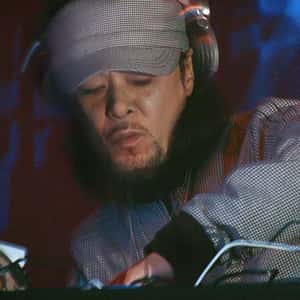
Japanese producer Hideaki Ishi, better known as DJ Krush, has been making waves in the trip hop world since the early '90s with his uniquely atmospheric and meditative soundscapes. Known for his groundbreaking use of sampling and turntablism, DJ Krush consistently pushes the boundaries of the genre by incorporating elements of jazz, hip-hop, and traditional Japanese music into his work. With a discography that spans multiple decades, DJ Krush remains an influential figure within the trip hop scene, inspiring future generations of artists with his innovative, genre-defying approach to music production.
Rock Out To Some Of The Most Popular Songs From DJ Krush - "Kemuri" - "Song 2" - "Big City Lover"
Dive Into DJ Krush's History With Some Unique Deep Cuts - "Road to Nowhere" - "Meiso"
- # 146 of 157 on The Best DJs in the World Right Now
- # 23 of 43 on The Best Bands Like Massive Attack
- # 36 of 99 on The Real Names of 100 DJs
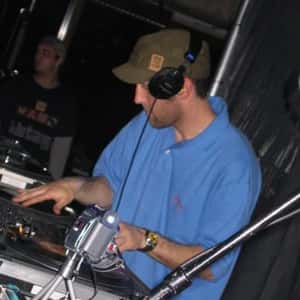
American producer Ramble Jon Krohn, better known as RJD2, burst onto the trip hop scene in the early 2000s with his adventurous, genre-blurring approach to music-making. His debut album Deadringer showcased a unique blend of hip-hop, electronica, and soulful sampling that garnered widespread acclaim and helped establish him as a pioneer within the trip-hop scene. Throughout his career, RJD2 has continued to push the boundaries of the genre by incorporating a wide range of influences and collaborating with various artists, solidifying his status as an innovative force in the world of trip hop.
Rock Out To Some Of The Most Popular Songs From RJD2 - "Ghostwriter" - "Smoke & Mirrors" - "The Horror"
Dive Into RJD2's History With Some Unique Deep Cuts - "Dead Ringer" - "Shot in the Dark"
- # 122 of 157 on The Best DJs in the World Right Now
- # 72 of 81 on The 80+ Best Rap Producers Of All Time, Ranked
- # 85 of 99 on The Real Names of 100 DJs
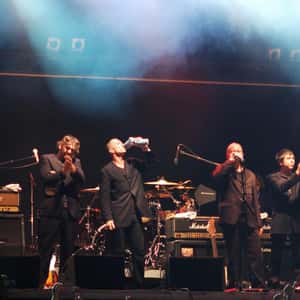
The London-based collective Archive has been pushing the boundaries of trip hop since forming in the mid-1990s. With a diverse and ever-evolving roster of musicians, the group has developed a sophisticated sound that incorporates elements of rock, electronica, and orchestral music. Their ambitious concept albums, like the acclaimed Londonium , showcase their ability to create sweeping, cinematic soundscapes full of emotion and depth. Archive’s unique take on trip hop has earned them a dedicated fanbase, solidifying their status as one of the genre’s most daring and innovative acts.
Rock Out To Some Of The Most Popular Songs From Archive - "Bullets" - "You Make Me Feel" - "Again"
Dive Into Archive's History With Some Unique Deep Cuts - "Conscience" - "Numb"

Emancipator
Portland-based producer Doug Appling, known as Emancipator, has been a leading force in the trip-hop scene since the release of his acclaimed debut album Soon It Will Be Cold Enough . With a signature sound that blends lush instrumentation, intricate production, and cinematic soundscapes, Emancipator has consistently captivated listeners with his evocative and meditative compositions. A classically trained musician, Appling's ability to seamlessly weave together elements of electronic, hip-hop, and world music has helped him stand out as a unique and influential figure within the trip-hop genre.
Rock Out To Some Of The Most Popular Songs From Emancipator - "Soon It Will Be Cold Enough" - "Lionheart" - "Anthem"
Dive Into Emancipator's History With Some Unique Deep Cuts - "Periscope Up" - "Nevergreen"

Martina Topley-Bird
British singer-songwriter Martina Topley-Bird first emerged as a prominent figure within the trip hop scene through her collaborations with pioneering artist Tricky. Her distinctive, ethereal voice adds a unique depth to the atmospheric soundscapes that have come to define the genre. With subsequent solo work like her debut album Quixotic , Topley-Bird has demonstrated her ability to craft captivating trip hop compositions that seamlessly blend elements of electronica, pop, and rock. Her continued contributions to the genre have made her an enduring and influential presence within the trip hop community.
Rock Out To Some Of The Most Popular Songs From Martina Topley -Bird - "Sandpaper Kisses" - "Need One" - "Anything"
Dive Into Martina Topley -Bird's History With Some Unique Deep Cuts - "Too Tough to Die" - "Steal Away"
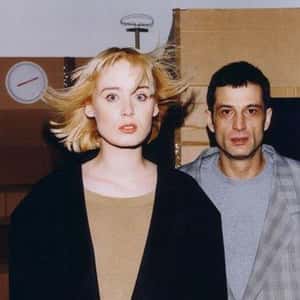
Irish singer Róisín Murphy and English producer Mark Brydon formed Moloko in the mid-'90s, bringing a quirky, innovative, and genre-defying sound to the world of trip hop. With hit singles like "Sing It Back" and "The Time Is Now," the duo crafted a distinct blend of electronic, pop, and dance music that set them apart from their peers. Throughout their career, Moloko's continuously evolving sound and Murphy's beguiling stage presence have earned them a dedicated fanbase and solidified their status as one of trip hop's most inventive acts.
Rock Out To Some Of The Most Popular Songs From Moloko - "Sing It Back" - "Time is Now" - "Fun for Me"
Dive Into Moloko's History With Some Unique Deep Cuts - "Pure Pleasure Seeker" - "Dominoid"
- # 46 of 65 on The Best Bands Named After Books and Literary Characters
- # 60 of 77 on The Best Musical Duos
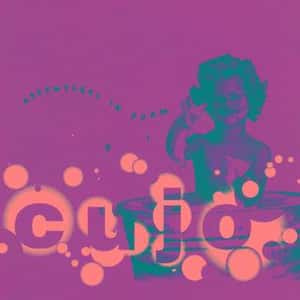
Brazilian-born composer and producer Amon Tobin has long been heralded as a pioneer within the realm of trip hop and electronic music. His unique ability to fuse diverse influences, ranging from jazz and ambient to drum and bass, has earned him a reputation for pushing the boundaries of the genre and defying categorization. Tobin's atmospheric and immersive compositions, such as those showcased on his groundbreaking album Bricolage , remain influential touchstones within the trip hop scene and continue to inspire future generations of producers and musicians.
Rock Out To Some Of The Most Popular Songs From Amon Tobin - "Four Ton Mantis" - "Easy Muffin" - "Stoney Street"
Dive Into Amon Tobin's History With Some Unique Deep Cuts - "The Lighthouse" - "Bridge"

The eclectic New York duo Cibo Matto, comprised of Japanese expats Yuka Honda and Miho Hatori, brought a quirky, genre-defying approach to trip hop with their 1996 debut album Viva! La Woman . Incorporating elements of hip-hop, pop, and experimental music, Cibo Matto's unconventional sound and whimsical lyricism set them apart from their peers. Their unique blending of styles and penchant for culinary-themed lyrics helped Cibo Matto carve out a distinct niche within the trip hop community, making them one of the genre's most memorable and singular acts.
Rock Out To Some Of The Most Popular Songs From Cibo Matto - "Sugar Water" - "Know Your Chicken" - "Birthday Cake"
Dive Into Cibo Matto's History With Some Unique Deep Cuts - "White Pepper Ice Cream" - "Sci -Fi Wasabi"
Supreme Beings of Leisure
The Los Angeles-based collective Supreme Beings of Leisure merged trip hop with elements of lounge, world music, and electronica to create a unique and enticing sound in the late '90s. The group's self-titled debut showcased their ability to craft lush, groove-driven compositions that catered to fans of downtempo electronic music. Supreme Beings of Leisure's diverse influences and innovative approach to trip hop earned them a dedicated following and helped cement their place within the pantheon of influential acts in the genre.
Rock Out To Some Of The Most Popular Songs From Supreme Beings of Leisure - "Strangelove Addiction" - "Golddigger" - "Never the Same"
Dive Into Supreme Beings of Leisure's History With Some Unique Deep Cuts - "Ain't Got Nothin'" - "Sublime"

Little Dragon
Swedish band Little Dragon, fronted by the dynamic vocalist Yukimi Nagano, brings a fresh, genre-defying approach to trip hop, blending influences from electronica, R&B, and synth-pop. With acclaimed albums like Ritual Union under their belt, the band has captivated audiences worldwide with their unique sound and electrifying live performances. As Little Dragon continues to push the boundaries of trip hop and explore new sonic territories, they remain an exciting and essential act within the genre.
Rock Out To Some Of The Most Popular Songs From Little Dragon - "Ritual Union" - "Twice" - "High"
Dive Into Little Dragon's History With Some Unique Deep Cuts - "Blinking Pigs" - "Feather"

French musician and producer Jean-Yves Prieur, known as Kid Loco, has been a fixture in the trip hop scene since the mid-'90s, producing music that blends elements of dub, jazz, and electronica into an intoxicating, downtempo sound. His debut album A Grand Love Story showcased his deft touch for crafting lush instrumental soundscapes that evoke a sense of warmth and nostalgia. With a career spanning multiple decades and numerous collaborations, Kid Loco has solidified his status as an influential figure within the trip hop genre.
Rock Out To Some Of The Most Popular Songs From Kid Loco - "A Grand Love Theme" - "She's My Lover" - "The Bootleggers"
Dive Into Kid Loco's History With Some Unique Deep Cuts - "Love Me Sweet" - "Calling Aventura King"
Bitter:Sweet
Los Angeles-based duo Bitter:Sweet, consisting of vocalist Shana Halligan and producer Kiran Shahani, delivered a sultry, sophisticated take on trip hop that captivated listeners in the mid-2000s. Drawing inspiration from jazz, lounge, and electronica, their debut album The Mating Game showcased their ability to craft intoxicating, melody-driven compositions that resonate with fans of the genre. Though their time as a duo was brief, Bitter:Sweet's unique sound left a lasting impression on the trip hop scene and continues to be celebrated by fans and fellow musicians alike.
Rock Out To Some Of The Most Popular Songs From Bitter:Sweet - "Dirty Laundry" - "Drink You Sober" - "The Mating Game"
Dive Into Bitter:Sweet's History With Some Unique Deep Cuts - "Heaven" - "Don't Forget to Breathe"

Canadian singer-songwriter Esthero, born Jen-Bea Englishman, made a powerful entrance to the trip hop scene with her 1998 debut album Breath from Another . Her enchanting blend of jazz, pop, and electronica elements, combined with her candid lyricism and emotive vocals, struck a chord with listeners. While Esthero's sound has evolved over the years to include elements of R&B, hip-hop, and rock, her roots in trip hop remain evident, solidifying her status as one of the genre's most versatile and captivating artists.
Rock Out To Some Of The Most Popular Songs From Esthero - "Breath from Another" - "Heaven Sent" - "That Girl"
Dive Into Esthero's History With Some Unique Deep Cuts - "Swallow Me" - "Telephone"
- Electronic Music
- Bands/Musicians
Lists that rank the best rappers and hip hop artists from every time and place.
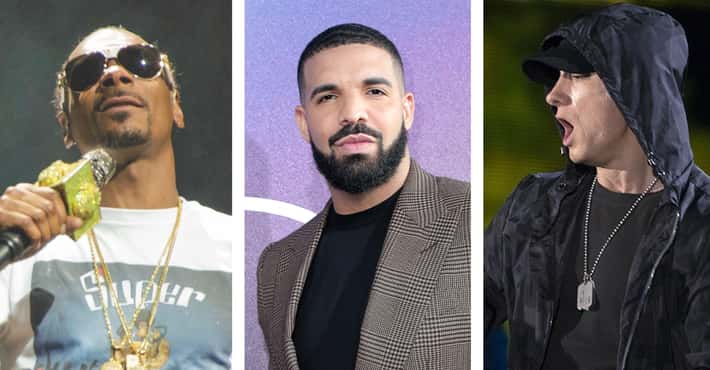
In Photos: The Revelries of Spring Fling
Penn’s greatest weekend of performance, artistry, and debauchery: a Spring Fling retrospective photo essay.
Penn’s Student Bands Get The Best of Both Worlds
Ahead of our inaugural “Street Sessions” band showcase, Street gets the inside scoop on our favorite Penn musicians
Inside the Penn Museum’s Efforts to Respect Native American Origins of Artifacts
As new federal regulations come into effect, the Penn Museum is continuing to rectify their previous mistakes.
Music is On Sydney McKeever’s Mind
Classical music training might have prevented major brain damage for this Penn freshman.
Ego of the Week: Walden Green
Meet Street's former editor–in–chief: patron saint of Street print production, goat milk aficionado, and Twitter ethnographer for the ages.
Ego of the Week: Kiln Chen
This senior is embracing her community and identity wherever she goes.
Who Am I, If Not a Violinist?
I know I am not the art that I create, but I also wouldn’t be who I am if it weren’t for my art.
Embracing the Amateur
The imperfect brushstrokes that make up an artist’s “perfection”
Non–Strangers
At what point does a stranger become a non–stranger?
Francis Ford Coppola is Going All In Again
The legendary director will finally release his long–gestating dream project, ‘Megalopolis’ this year.
Watching TV on TikTok
Ever spent 4 hours down a rabbit hole watching 'Pen15' On TikTok?
Percy Jackson on Disney+
A childhood cultural phenomenon beyond the screen
The Dark Side of the Whack World
On World Wide Whack, the Philly rapper/singer reflects on six years of anxiety and depression.
Harmony of Opportunity
Join Penn Music Business at Penn for their first show at Warehouse this Wednesday.
Julia Pratt on Finding Belonging Between Her Melodies
This Philadelphia native is making songs that she wants to listen to and we can't get enough.
The Boundaries of Expression Are Being Redrawn
Exploring the unexpected synergy between creativity, accessibility, and artificial intelligence.
Celeste Ng is Questioning Everything
Visiting Penn this past week, this critically acclaimed novelist explains how writing helps her understand the world.
Take It to the Streets: What to Do in Philly this Month
This month: cherry blossoms, food trucks, art exhibits—and lots more to explore.
The Girls are Fighting... And That's Okay
A look into Nicki Minaj and Megan Thee Stallion's rap feud
My New Little Red Book
A new Chinese cultural revolution is proliferating across the digital beautysphere.
Overheards February 2024
This Month: botox, blowjobs, and bisexuals.
Overheards December 2023
This month: super stylists, super villains, and super sloppy top.
Overheards November 2023
This month: hummus, hoagies, and homophobia.
34th Street Magazine is part of a student-run nonprofit.
Please support us by disabling your ad blocker on our site., hell is round the corner: an autopsy of trip-hop, let's discuss the record–scratching, tear–jerking, soul–sucking vibes of the '90's greatest export..
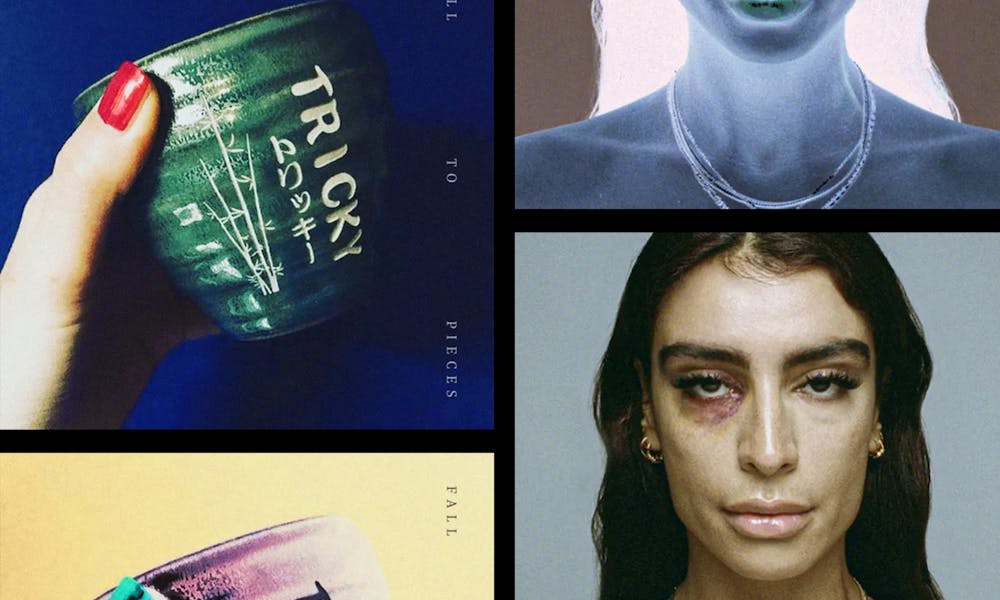
Close your eyes. Imagine, if you can, what the '90s were like. Not the literal day–to–day hustle and bustle, but the general mood. It's the middle of the night, and you're walking down a street. Sewer fumes obscure your vision, but it doesn't matter, because you haven't decided where you're walking to yet. Your baggy jeans and Nirvana tee are fashionably grimy, covered in tiny circular burns and beer stains. You take a long, last drag of your dying cigarette before stamping out the embers, extinguishing the final light of the dark alley you just turned down. Your headphones drown out the incessant rumblings of city life: ever so slowly, the hiss and crackle of vinyl pops fade in, washing out your ears like auditory smoke. "Give me a reason to love you," the lead singer croons over a wailing guitar solo.
In the '90s, one sound reigned supreme: the powerfully dark, noir–influenced vibes of trip–hop. I was born in 1999—I missed out on the actual experiences of the '90s—but there's something about trip–hop that allows us to tap into the zeitgeist of decades past in a way that a lot of genres can't do. The music is foreign yet instantly familiar; it's dingy, minimal, slow, gritty, and ever so sexual, yet it exists solely in a different era. Trip–hop sounds like an after–hours event at an after–hours nightclub, when all of the uppers have worn off and the intoxicating aura of lethargic exhaustion clings to the sweat–soaked floors.
Trip–hop started and ended in Bristol, England. In the early 1980s, a sound system , t he Wild Bunch , started making waves in the Bristol underground scene. By fusing together a massive range of genres (especially old punk, R&B, and reggae records) to create tired, washed–out beats, they developed an entirely new style of music: trip–hop. Key members of the Wild Bunch included—among many others— Tricky and Robert Del Naja .
Del Naja, Tricky, and a few other members of the collective eventually formed Massive Attack. Their first album, Blue Lines , came out in 1991 and essentially laid the foundations of the genre in the mainstream. Their most notable album, though, is 1998's Mezzanine . They've released a few other records since then (their last one, Heligoland , came in 2010), but the decline of Massive Attack more or less marked the decline of trip–hop.
Tricky left Massive Attack at some point after its inception, and began releasing his own solo material. His 1995 album, Maxinquaye , was a landmark release for trip–hop. The music on Maxinquaye ranges from industrial rock remixes of Public Enemy tracks to chill–inducing, melodramatic displays of vocal acrobatics. Trip–hop sounds like a lot of things, and Maxinquaye was a reminder that above all else, trip–hop was as secretive and sensual as a midnight hook–up.
The third notable trip–hop pioneer is Portishead. Though they don't have any formal ties to the Wild Bunch, their 1994 album, Dummy , is widely regarded as the definitive trip–hop album, firmly cementing the collection of sounds and influences into a coherent genre. They've released just two other albums since then— Portishead in 1997, and Third in 2008—but are more or less inactive now.
Tricky, then, is the only member of this unholy trinity of trip–hop troublemakers who still consistently releases music. To be frank, his new stuff isn't good. It's still trip–hop, sure, but it hasn't translated well to 2020. His latest album, Fall to Pieces , makes for an especially embarrassing listen. How could one of the progenitors of the style misunderstand it on such a fundamental level, only three decades later? For Tricky, the minimal aesthetics of the genre have given way to unfinished beats, boring melodies, uninspired samples, and lifeless vocals. It seems he's mistaking whispered platitudes of edginess for genuine gloominess and slow, boring drums for feelings of cultural malaise. The one track worth listening to, "Running Off," still offers nothing of note other than a slightly interesting beat.
That's it, then. Trip–hop is officially dead; its creators have either abandoned the sound, given up, or can no longer inspire similar feelings of genuine dread that carried the music through the '90s. There haven't been any significant revivals like other genres have seen, and none of the smaller acts that filled out the Massive Attack/Tricky/Portishead trinity gained large enough followings to survive. It will forever be a relic of the past, a cultural touchstone for an era gone by.
The one artist still maintaining the dark, grimy aesthetics of the genre, while releasing incredibly malaise music, is Sevdaliza . Iranian–born and Amsterdam–residing, Sevdaliza released her sophomore album, Shabrang , the same day Tricky's Fall to Pieces came out. Where Tricky's effort was boring and uninspired, Sevdaliza's album is just as experimental as it is an homage to trip–hop's heyday.
"Rhode," for example, draws directly from Portishead's Third , culminating in a disturbing instrumental break that carries the demented fury of a circular saw slicing through bone. Other songs on Shabrang reference trip–hop in a similarly direct way: "All Rivers At Once" is a slow–burning, moody guitar jam; "Lamp Lady" uses a dusty, downtempo drum sample; "No Way," "Habibi," and "Gole Bi Goldoon" showcase Sevdaliza's versatile soprano vocals in a way that rings eerily similar to Portishead's Beth Gibbons.
Discussing trip–hop in the present tense is a futile task. The genre peaked decades ago, and despite notable newcomers like Sevdaliza still showcasing different, innovative sounds, trip–hop will forever remain a window into the sights and sounds of the 90s. Let it die a dignified death: we can always spin our favorite records again, but we can't as easily repair a tarnished legacy.
More Like This
Pennconnects, newsletters.
Get 34th Street's newsletter, The Toast, delivered to your inbox every Friday morning.


IMAGES
VIDEO
COMMENTS
Trip hop is a musical genre that originated in the late 1980s in the United Kingdom, especially Bristol. It has been described as a psychedelic fusion of hip hop and electronica with slow tempos and an atmospheric sound, often incorporating elements of jazz, soul, funk, reggae, dub, R&B, and other forms of electronic music, as well as sampling from movie soundtracks and other eclectic sources.
The term "trip-hop" was first coined in 1994, when a writer at the dance music bible Mixmag used it to describe DJ Shadow's ambitious single "In/Flux." The seeds of this new genre—the U.K.'s answer to America's burgeoning hip-hop movement—can be traced back to the late '80s and early '90s in Bristol, a bustling college town in South West England where pioneers of the so ...
Trip-hop's gloomy vocals, downbeat elements, and wistful jazzy sounds set it apart from the genres that inspire it. Originating in the United Kingdom, the subgenre of trip-hop is a blend of several musical styles, including acid jazz, hip-hop, reggae, and electronica.
Trip-hop is a combination of the immersive style of music with the downbeats used in hip-hop. The term "trip-hop" was first published in the early 1990s in MixMag, a prominent British dance and club music magazine. Music journalist Andy Pemberton coined the phrase while describing the sonic journey, or "trip," experienced through DJ ...
trip-hop, genre of atmospheric down-tempo music, influenced by movie sound tracks, 1970s funk, and cool jazz and usually created using samples.. Coined by the British dance magazine Mixmag but rejected by many of its purported practitioners, trip-hop originated in Bristol, Eng., a West Country port known for its leisurely pace of life (see Creative Centres map: Bristol overview 1990).
Trip-hop swerved from the mainstream appeal of hip hop where graffiti, breakdance, and hip hop were the cultural norm. Instead, style of music with big appeal in the UK underground at the time, namely breakbeat, helped this genre unfurl. Breakbeat is simple "broken beats", which originate from jazz and funk and evolved into trip-hop, jungle ...
Yet another in a long line of plastic placeholders to attach itself to one arm or another of the U.K. post-acid house dance scene's rapidly mutating experimental underground, Trip-Hop was coined by the English music press in an attempt to characterize a new style of downtempo, jazz-, funk-, and soul-inflected experimental breakbeat music which began to emerge around in 1993 in association with ...
As the name suggests, it pertains to an origin in hip-hop music. Hip-hop was itself born from funk music, characterised by heavy use of sampling and later became synonymous with rap music with the likes of N.W.A. laying sharp lines over Dr. Dre's iconic beats. Trip-hop is a term coined in the mid-1990s, but the label has since been extended ...
Jhelisa Anderson is one of the more obvious connections to the soul/jazz world, but also one of the few musicians who fondly embraces "trip-hop" as a term. Mississippian by birth, she relished ...
Defining the Trip Hop Sound. At its core, trip hop is a genre that defies easy categorization. It's a hybrid sound that emerged from the electronic and hip-hop scenes, blending together an eclectic range of influences. Trip hop is known for its downtempo beats, often hovering around 90 to 110 BPM, creating a relaxed yet engaging sonic experience.
Though its prime movers — Massive Attack, Tricky and Portishead — all loathe the term, the word "trip-hop" has become synonymous with the style created by Bristol bands like Massive Attack and ...
The Origin & Pioneers Of Trip Hop. Trip Hop first emerged in the late 1980s in the Bristol music scene in the United Kingdom. It was influenced by various genres, including Hip Hop, soul, jazz ...
It's about diving into the unique rhythm and style, embracing the electronic yet organic feel, and understanding the nuances that make trip hop a genre like no other. Crafting Laid-Back Drum Patterns To achieve a laid-back and hypnotic feel in your trip hop music, begin by experimenting with a slower tempo ranging from 90 to 100 bpm for your ...
It's one of the most disarming records of the era, and manages to fulfil the promise of trip-hop without succumbing to its trappings. Like Weather might be the one record on this list that has ...
The final section analyses several trip hop songs and identifies common elements that relate to the trip hop genre, before identifying explicit differences that distinguish the Bristol sound style. The analysis of style focuses on the spectral quality of the works and draws from Smalley's (1997) theory of spectromorphology.
Tricky is considered a pioneer of trip-hop, with his style known for being often dark in tone, and blending cultural influences and genres, such as hip-hop, rock and reggae. Massive Attack Trip-hop pioneers Massive Attack formed in 1988 in Bristol, led by Robert '3D' Del Naja, Adrian 'Tricky' Thaws, Andrew 'Mushroom' Vowles and Grant 'Daddy G ...
Trip hop music awakens the senses and unlocks a treasure trove of rhythm, style and emotion. This genre is steeped in the roots of British electronica, breakbeat, and hip hop. It's fascinating to wend your way through a collection of the finest trip hop artists whose songs have made a profound impact on music scenes globally.
Trip hop is a musical genre that originated in the late 1980s in the United Kingdom, especially Bristol. It has been described as a psychedelic fusion of hip hop and electronica with slow tempos and an atmospheric sound, often incorporating elements of jazz, soul, funk, reggae, dub, R&B, and other forms of electronic music, as well as sampling from movie soundtracks and other eclectic sources.
Trip hop (sometimes used synonymously with "downtempo") is a musical genre that originated in the early 1990s in the United Kingdom, especially Bristol. It has been described as "a fusion of hip hop and electronica until neither genre is recognizable", and may incorporate a variety of styles, including funk, dub, soul, psychedelia, R&B, and ...
Portishead - Dummy. Although Portishead weren't the first group to explore the sonic territory that would become known as trip-hop (that honor goes to their peers in Massive Attack), the Bristol, UK-based group is now practically synonymous with the genre. And it all began 25 years ago, when the trio of DJ and sampling guru Geoff Barrow ...
The final section analyses several trip hop songs and identifies common elements that relate to the trip hop genre, before identifying explicit differences that distinguish the Bristol sound style. The analysis of style focuses on the spectral quality of the works and draws from Smalley's ( 1997 ) theory of spectromorphology.
Trip-hop started and ended in Bristol, England. In the early 1980s, a sound system, t he Wild Bunch, started making waves in the Bristol underground scene. By fusing together a massive range of genres (especially old punk, R&B, and reggae records) to create tired, washed-out beats, they developed an entirely new style of music: trip-hop.
Trip-Hop is a fusion of Experimental Breakbeat, Reggae/Dub, Hip-Hop, Punk, Soul, and Jazz musical styles blended together to form a unique sound and genre. The defining forces of the genre Trip ...